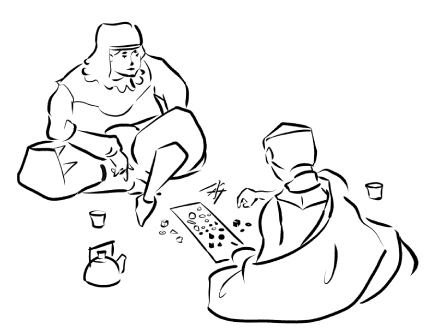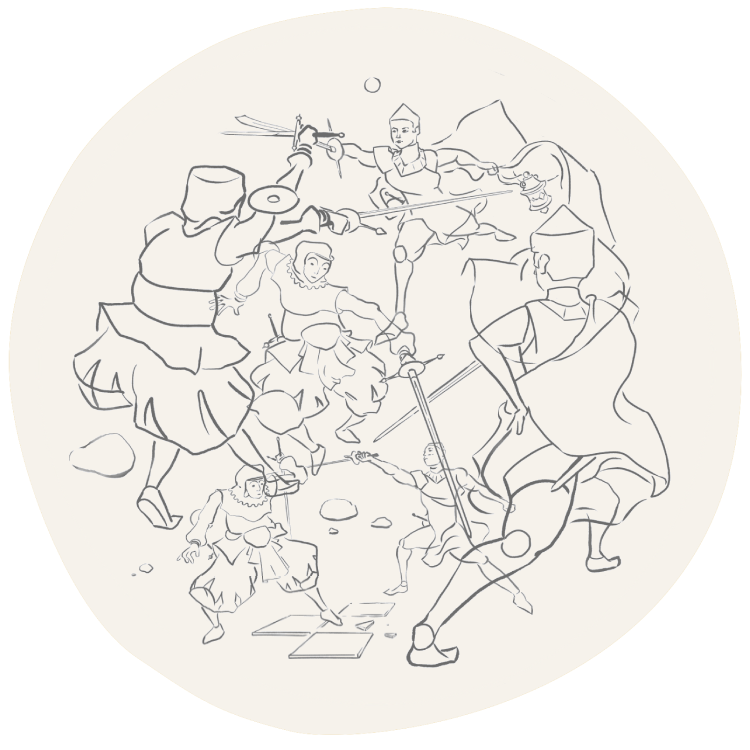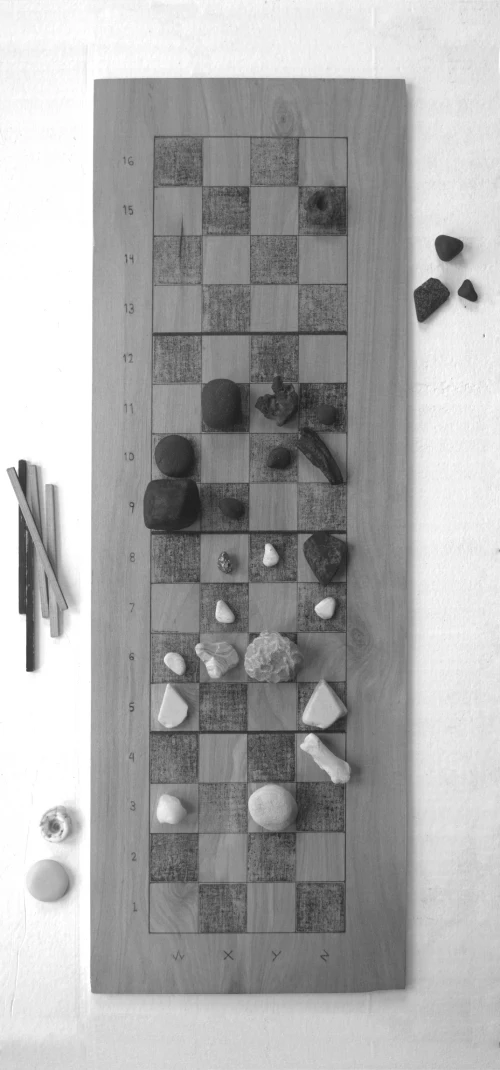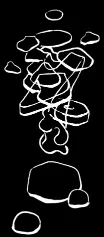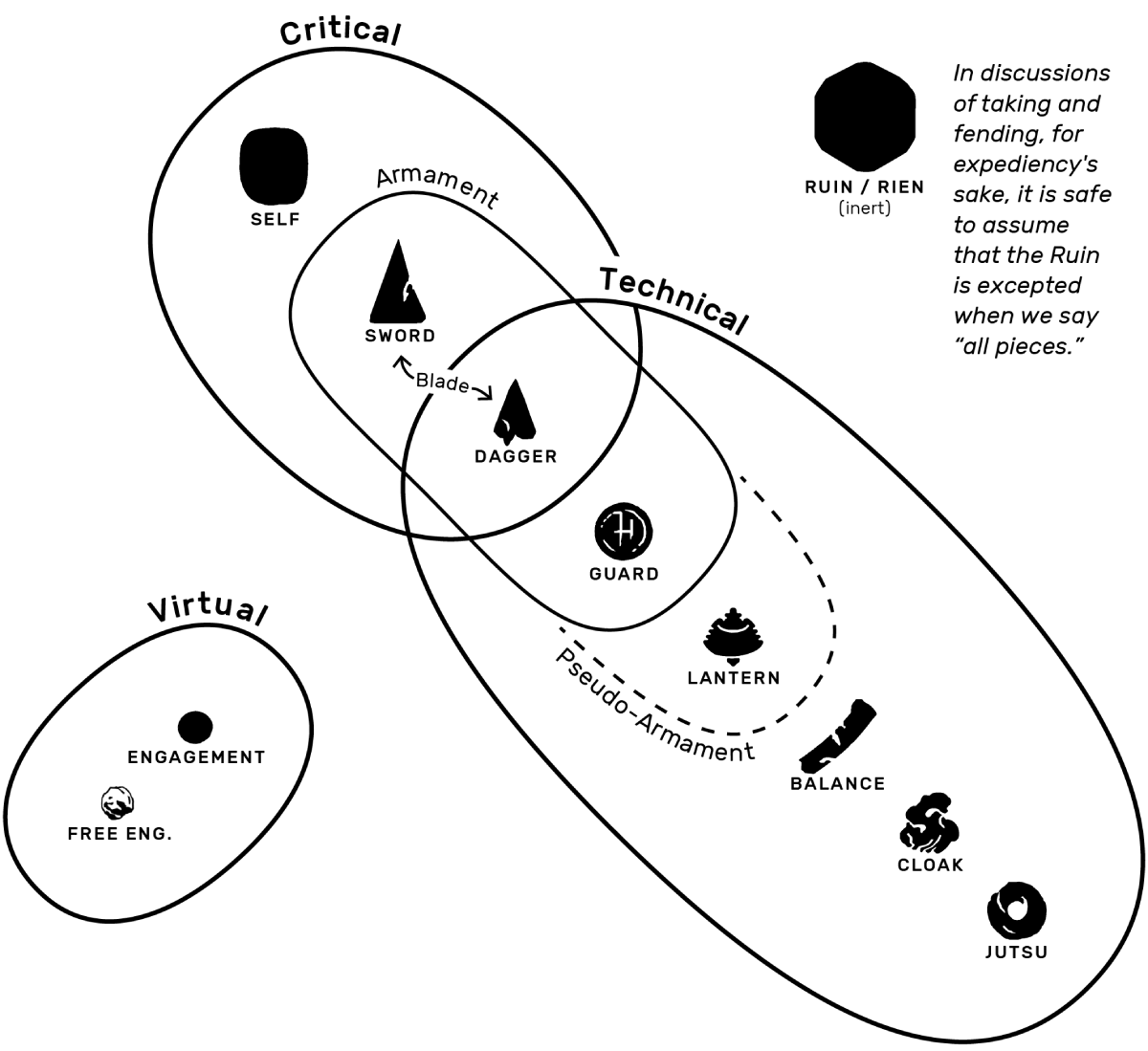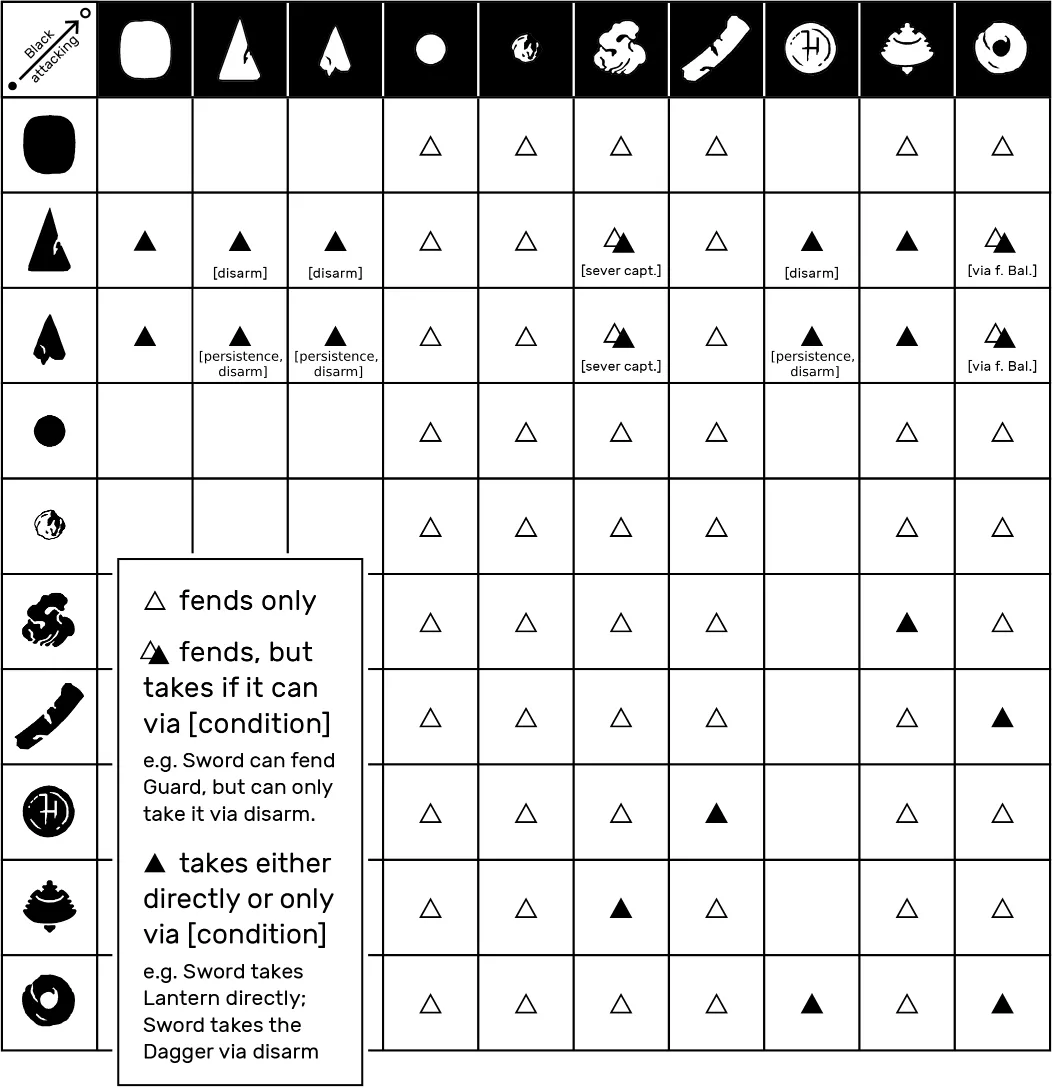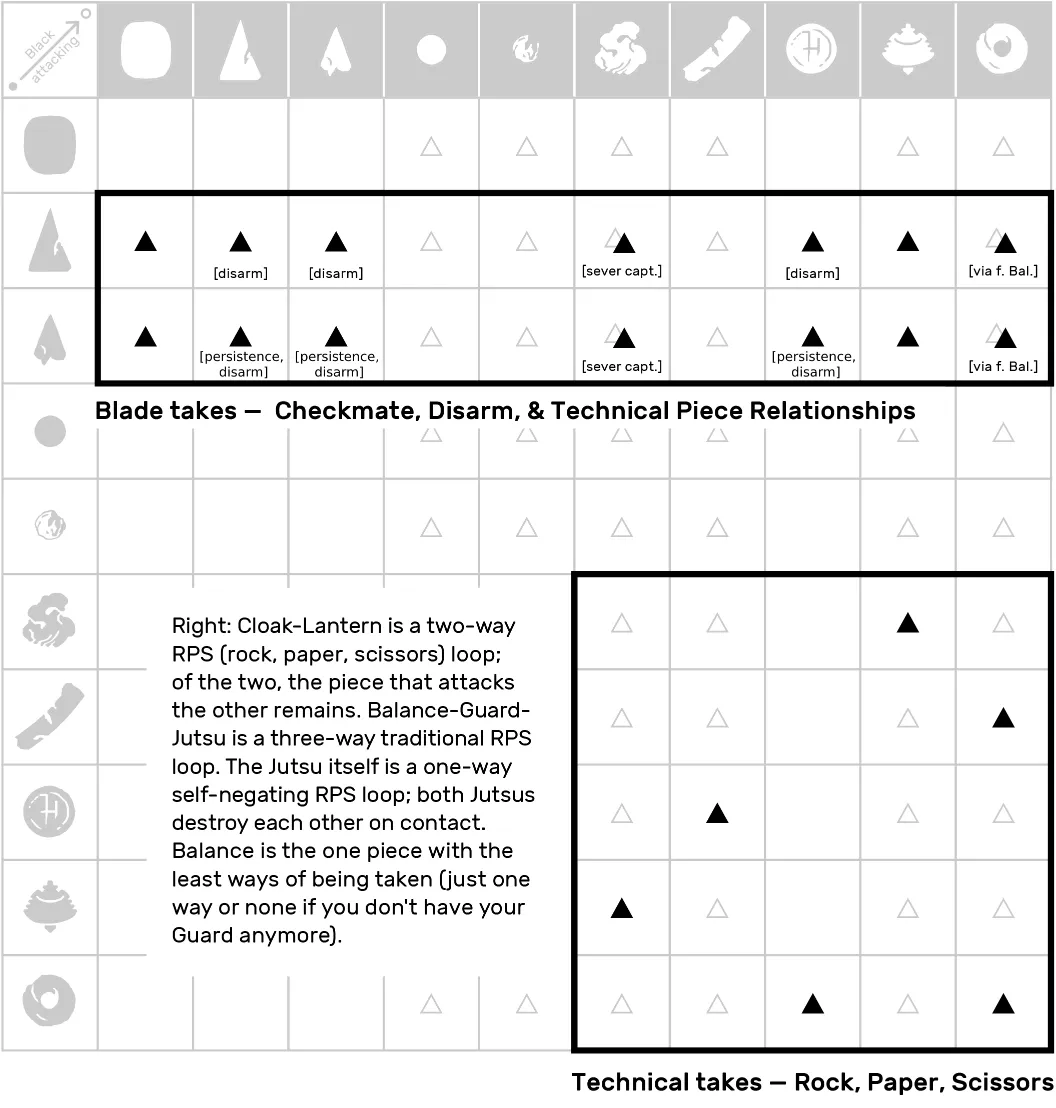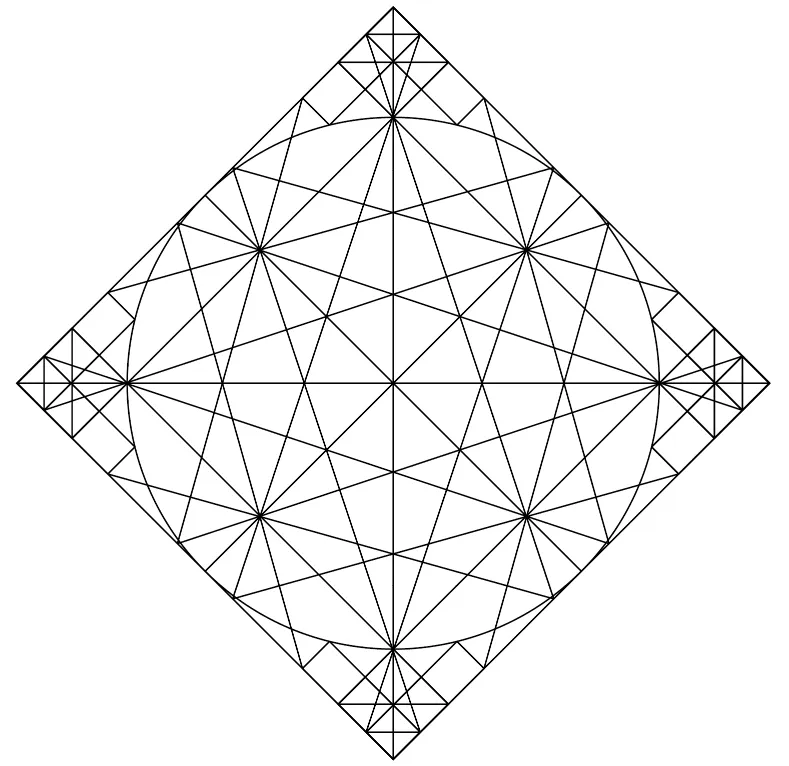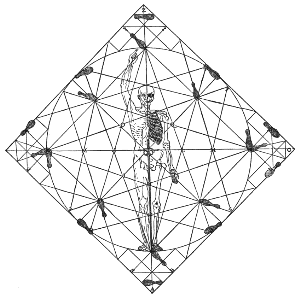Veney is a chesslike hyper-rock-paper scissors game of abstract strategy, for two players, designed to invoke the mechanics and spirit of fencing.
Contents
OVERVIEW
Fig.A Summary: The Pieces (In Brief)
2.0.I Introduction & Comparison to Chess
2.0.II Three Precepts of Spirit
2.0.III Playing with Sand
2.0.IV Overall Play & Goal
2.0.V The Board
2.0.VI Types of Pieces
Fig.B Diagram: Types of Pieces
2.0.VII Terminology: Take or Fend?
Fig.C Summary: Taking & Fending
RULES
2.0.01 The Pieces, Movements & Specials
2.0.02 Self
2.0.03 Sword
2.0.04 Engagement (pawn)
2.0.05 The Free Engagement
2.0.06 Cloak
2.0.07 Balance
2.0.08 Dagger
2.0.09 Guard
2.0.10 Lantern
2.0.11 Jutsu
2.0.12 Ruin/Rien
2.0.13 Placing & Withdrawing Pieces
2.0.14 Disarm
2.0.15 Double-Moves
2.0.16 Immaterial Actions
2.0.17 Passing
2.0.18 Devices of Art & Mysticism
2.0.19 Setting Up & Beginning a Game
2.0.20 Impasse & Other Edge Cases
2.0.21 Endings
2.0.22 Untenable Moves
2.0.23 Custom Rules & Extra
REFERENCE
2.0.R1 Alternate Dice for Dagger Throws
2.0.R2 Alternate Board Variant: Mystic Circle
2.0.R3 Time Control
2.0.R4 Additional Terminology
2.0.R5 Notation
2.0.R6 The Pieces' Shapes in a Standard Set
2.0.R7 Tips for Gathering/Fashioning Pieces
2.0.XYZ STORY
Yes! Isn't that great? Consider checking out the short version first. To get started playing more quickly, review the summary sections in the overview and perhaps just learn the pieces' various special moves as you go.
Summary: The Pieces (In Brief)
The Self
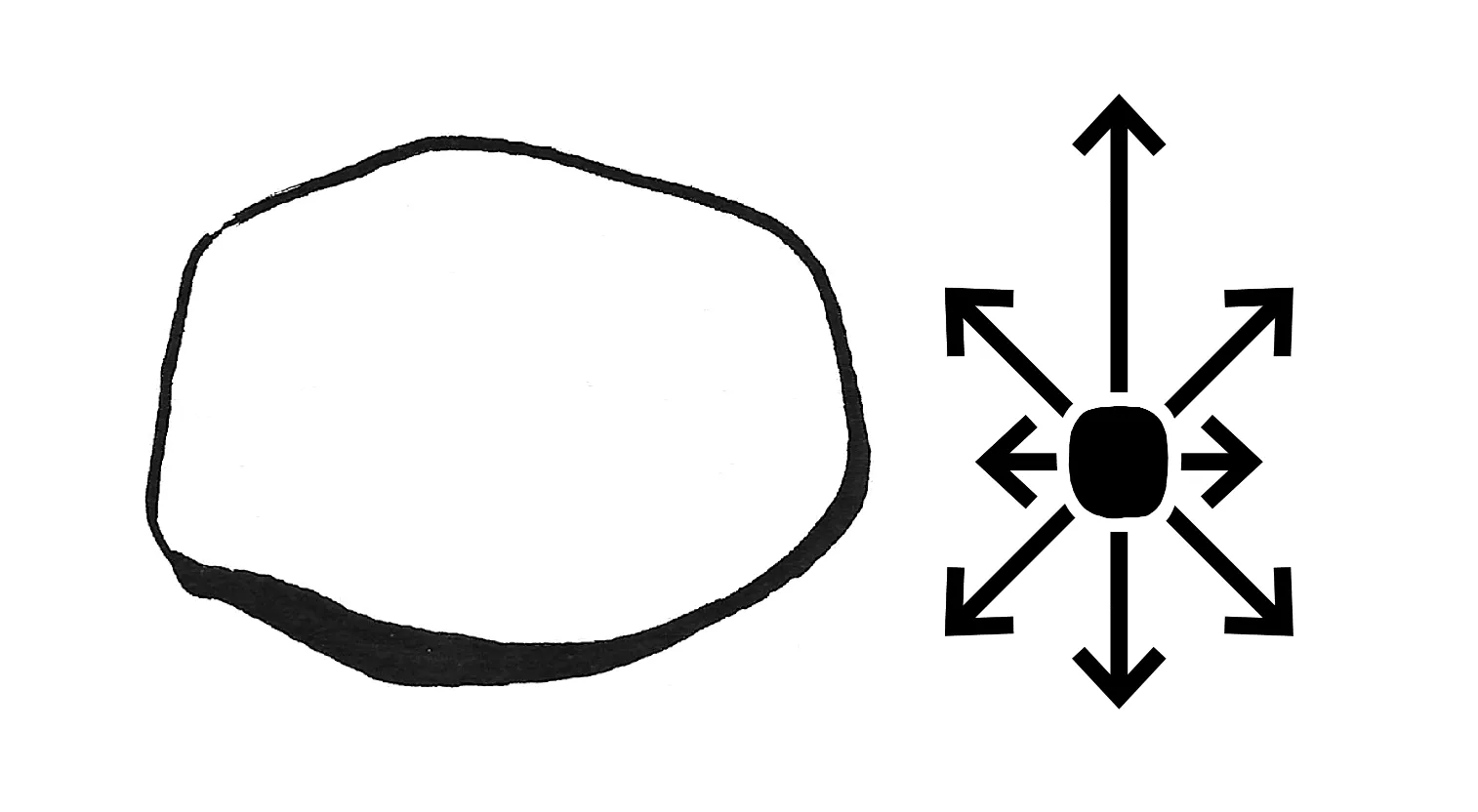
▪ Can take no pieces
▪ Can be checkmated
▪ Movement allows other pieces to advance and/or co-move
▪ Retreat can reset the entire board
The Sword
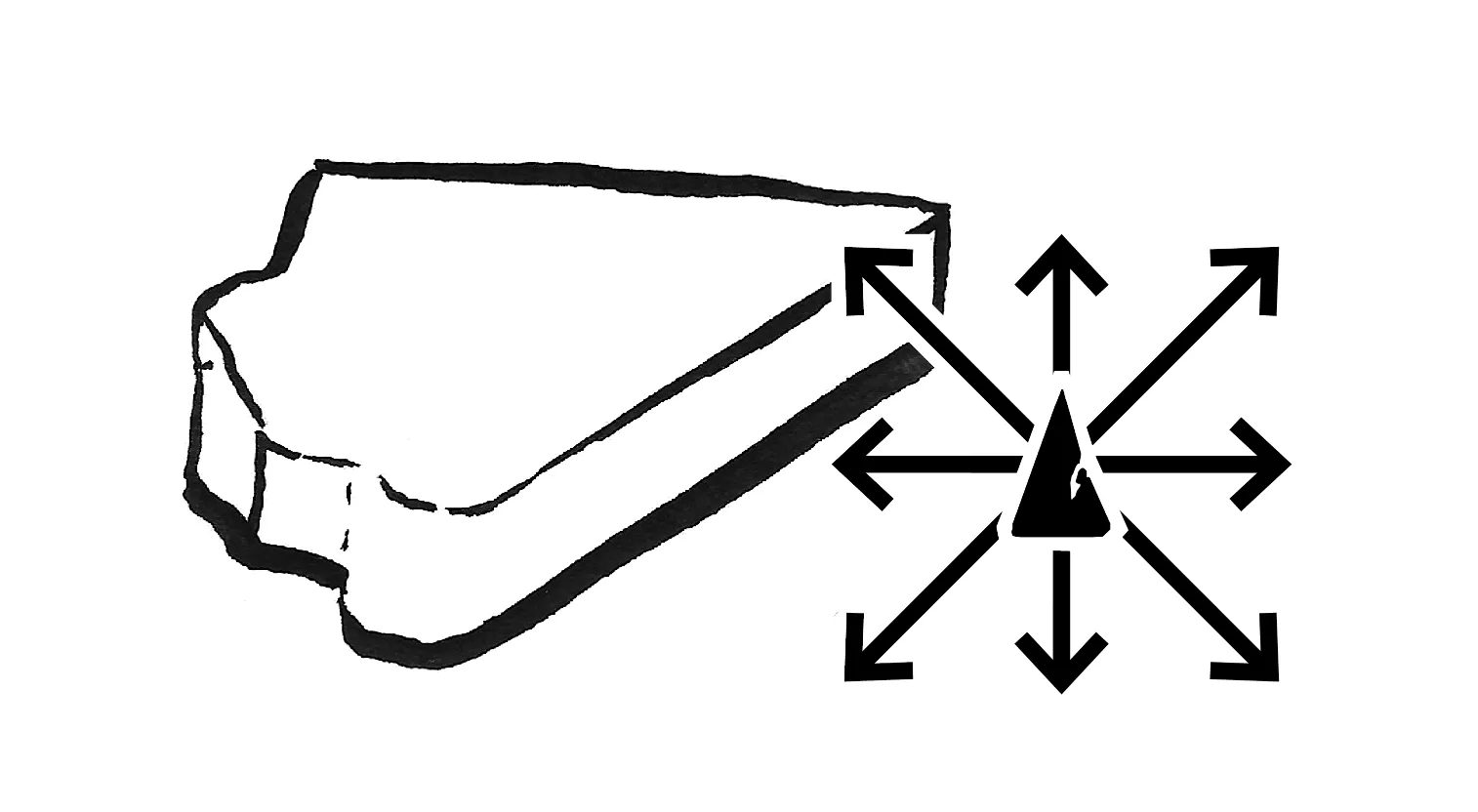
▪ Range constrained to the Self piece
▪ Co-moves in concert with Self piece
▪ Can take most other pieces
▪ Can be checkmated
▪ Used to perform checkmate
▪ Pushes / interacts with opposing blades
The Engagements
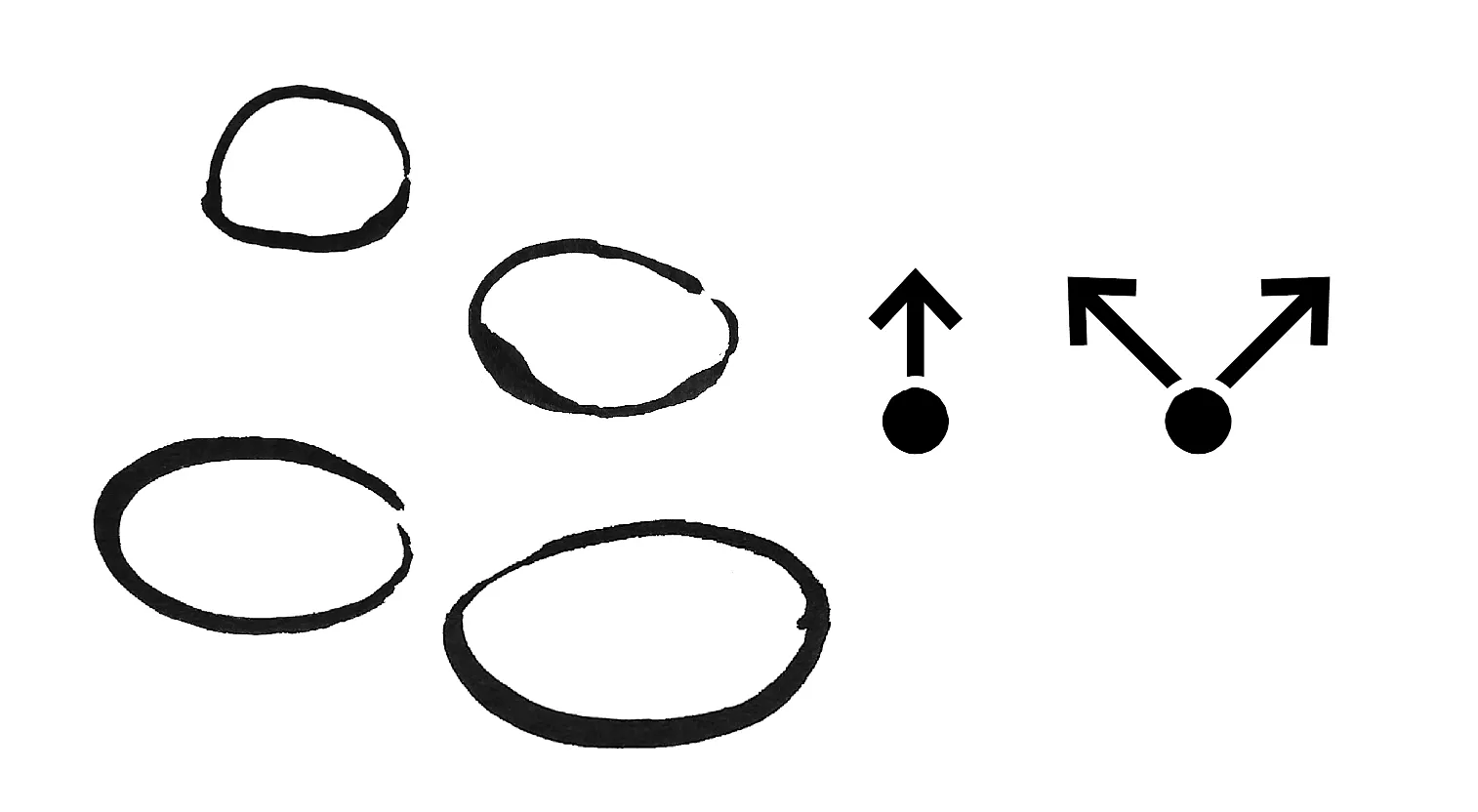
▪ Four of them (whereas only one each of the other pieces)
▪ Can take no pieces
▪ Never permanently lost, only fended
▪ Act as stepping-stones to facilitate double-moves by your other pieces
The Cloak
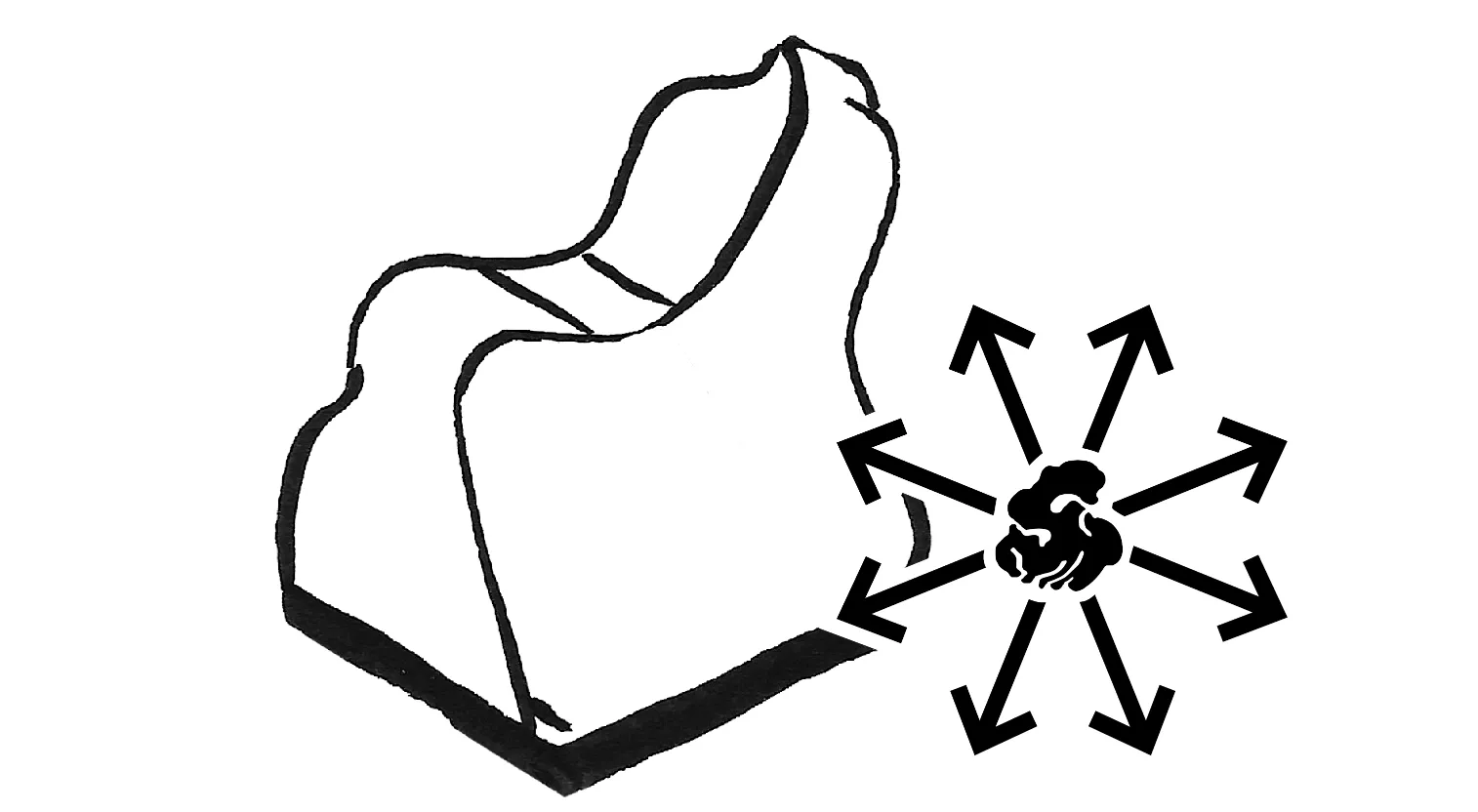
▪ Extinguishes the Lantern
▪ Can immobilize the Sword temporarily
▪ Provides an escape to the Self
▪ Can be fended, i.e. temporarily removed from the board
The Balance
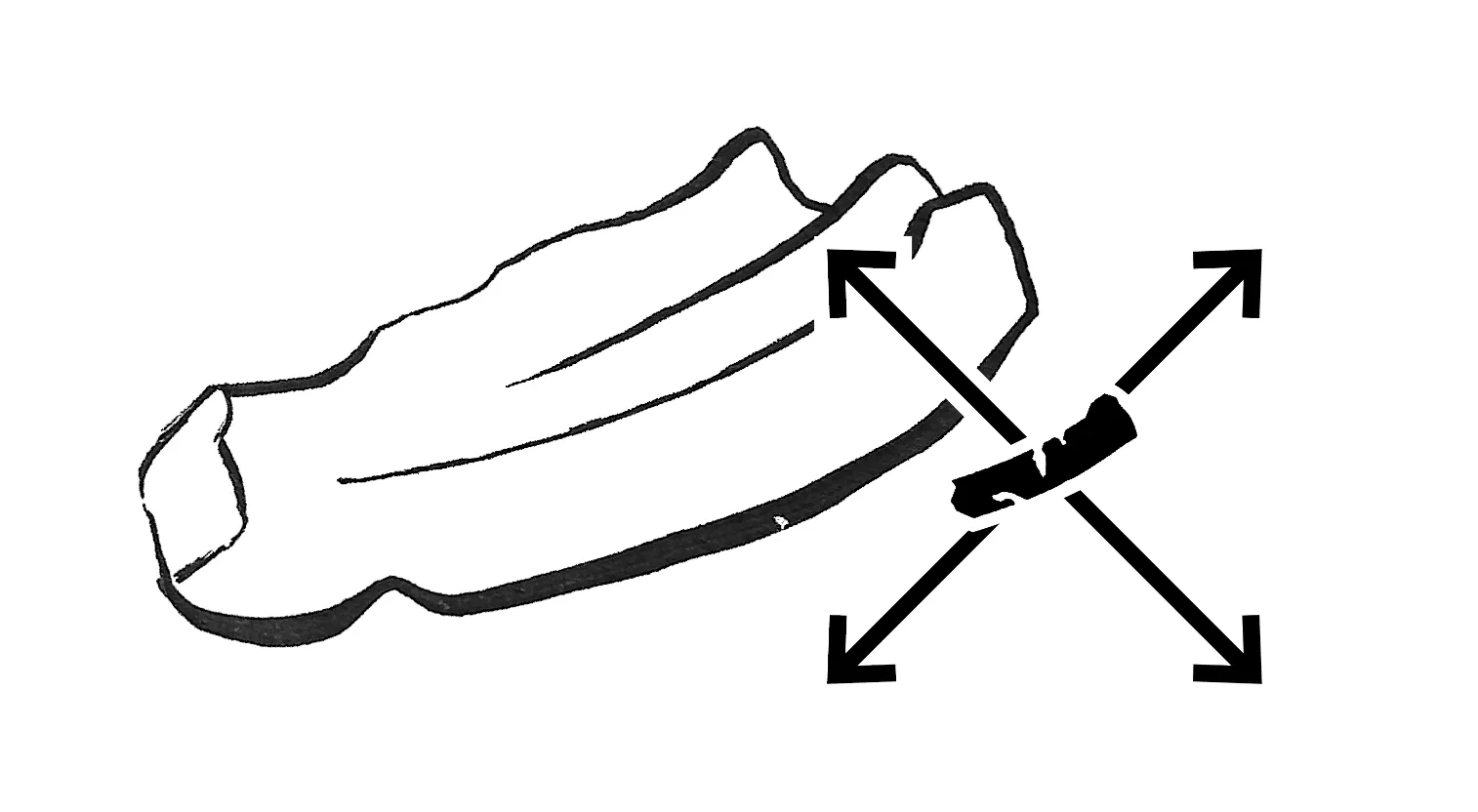
▪ Transcends the Jutsu
▪ Can trade places with your Sword
▪ Prevents Jutsu from entering its measure when in a measure with the Self
▪ Can be fended
The Dagger
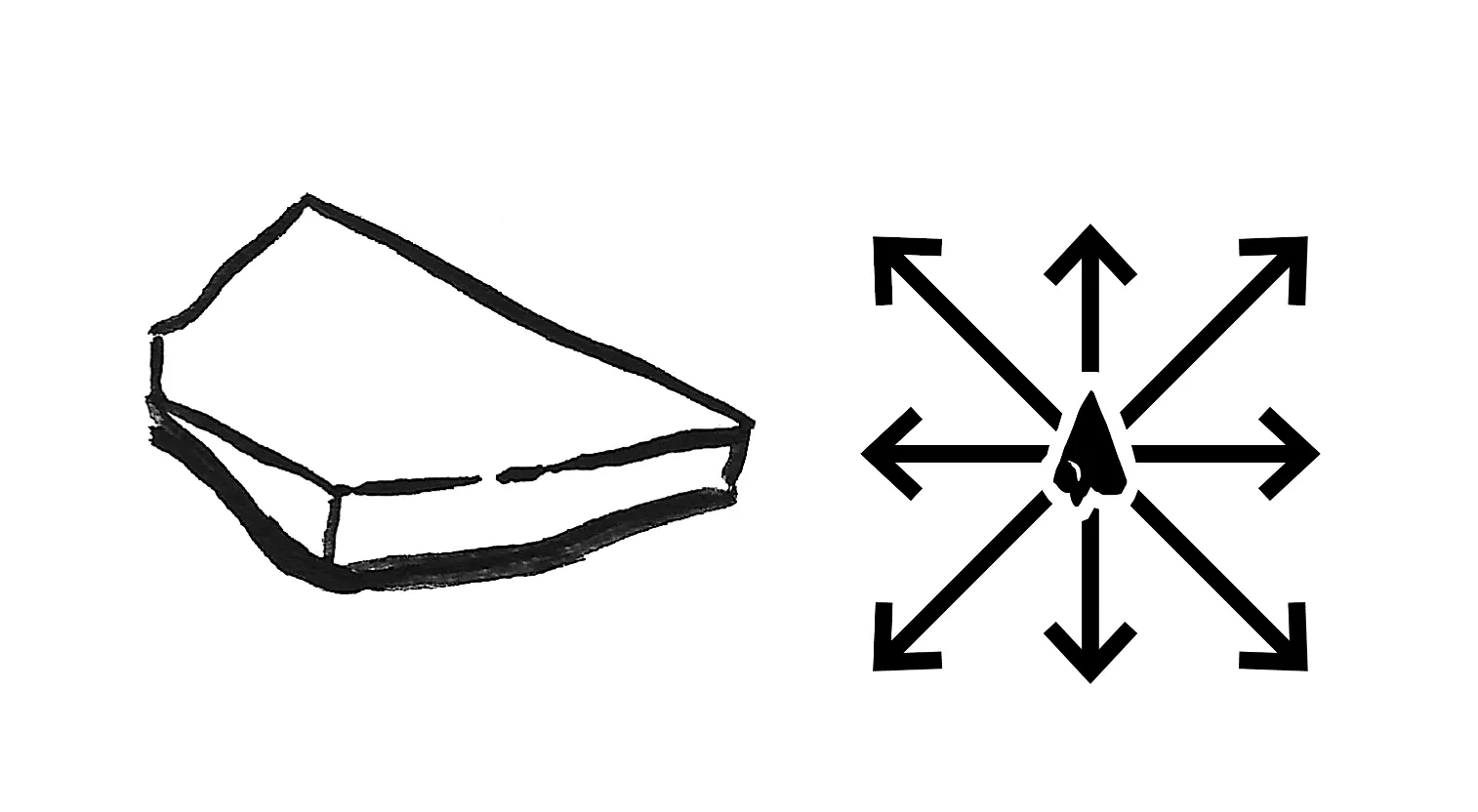
▪ Constrained closer to the Self
▪ Co-moves in concert with Self piece
▪ Player with this piece in play survives if the Sword is lost
▪ Can be used for a special thrown attack
▪ Blade-to-blade moves (like Sword) only on opposing Dagger
The Guard
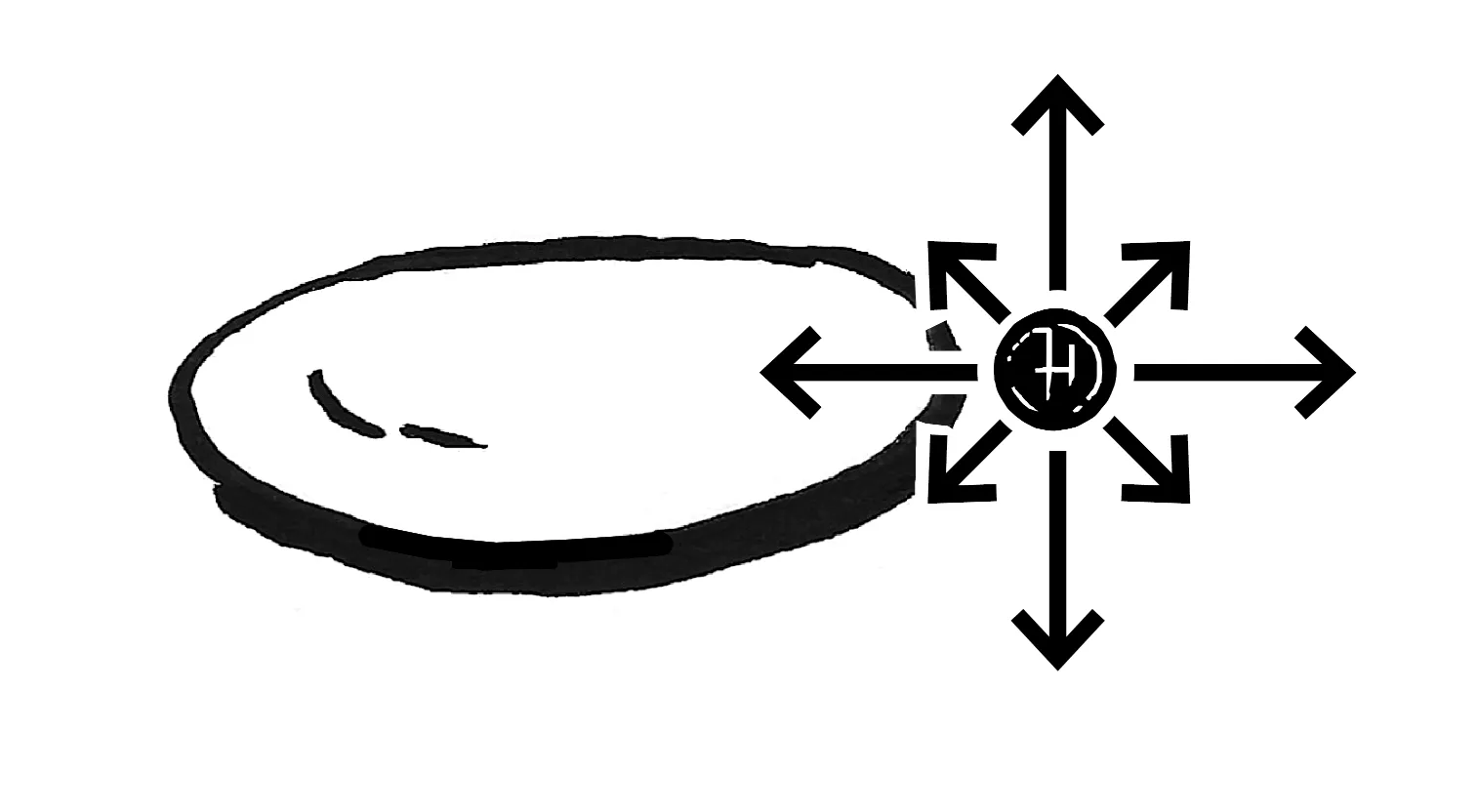
▪ Bludgeons Balance
▪ Deflects blades
▪ Can co-move in concert with the Self, like Sword/Dagger
The Lantern
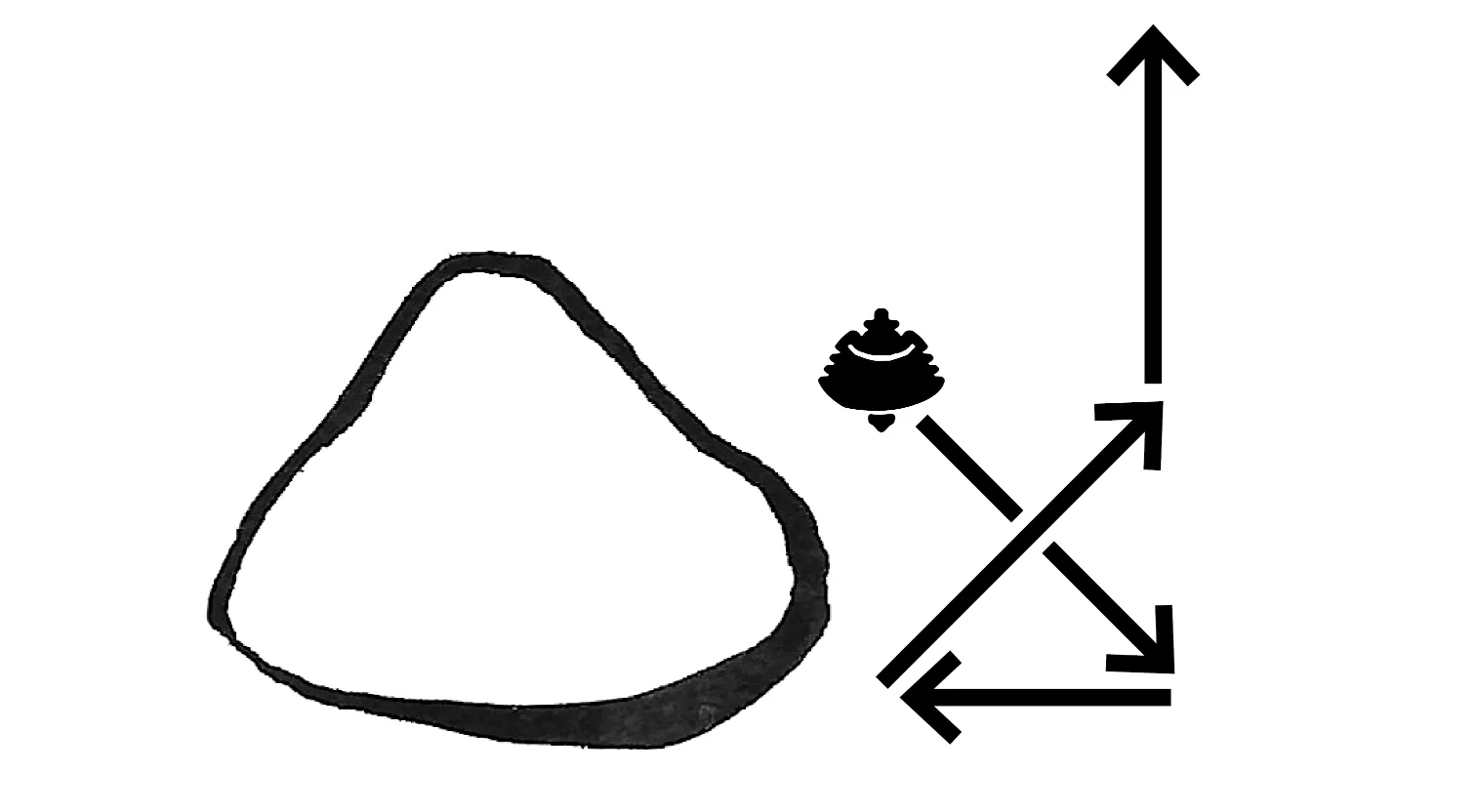
▪ Burns the Cloak
▪ Long-range “Glare” attack against Self fends Jutsu
▪ Can be fended
The Jutsu
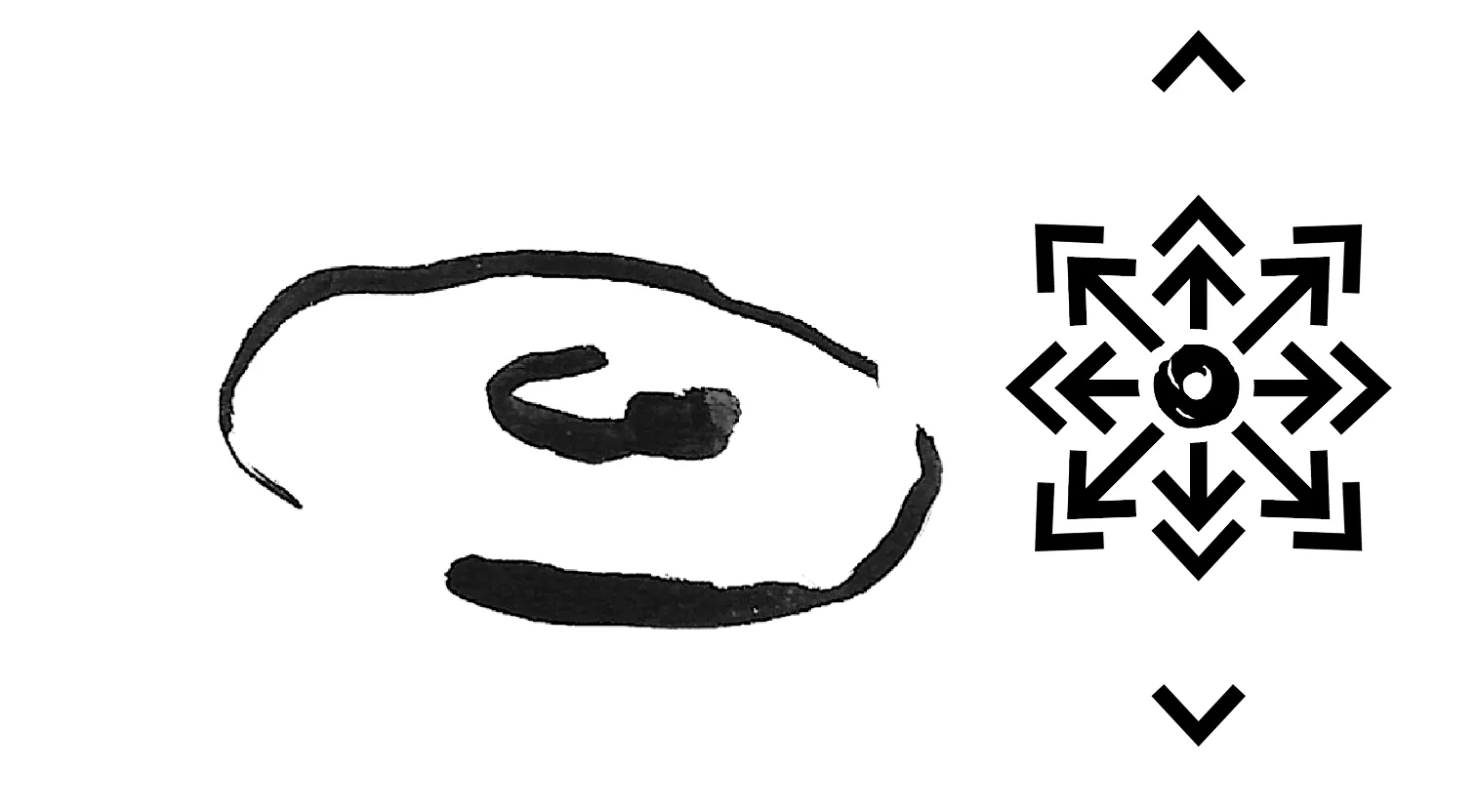
▪ Subverts the Guard, negates the other Jutsu and itself
▪ Prevents piece drops while in measure with the Self
▪ Used for feinting “intention”
The Free Engagement

▪ Moves like a King to open squares or attacks diagonally as if it were your own pawn
▪ “Meta-moves” on lines of the grid before entering play
The Ruin/Rien
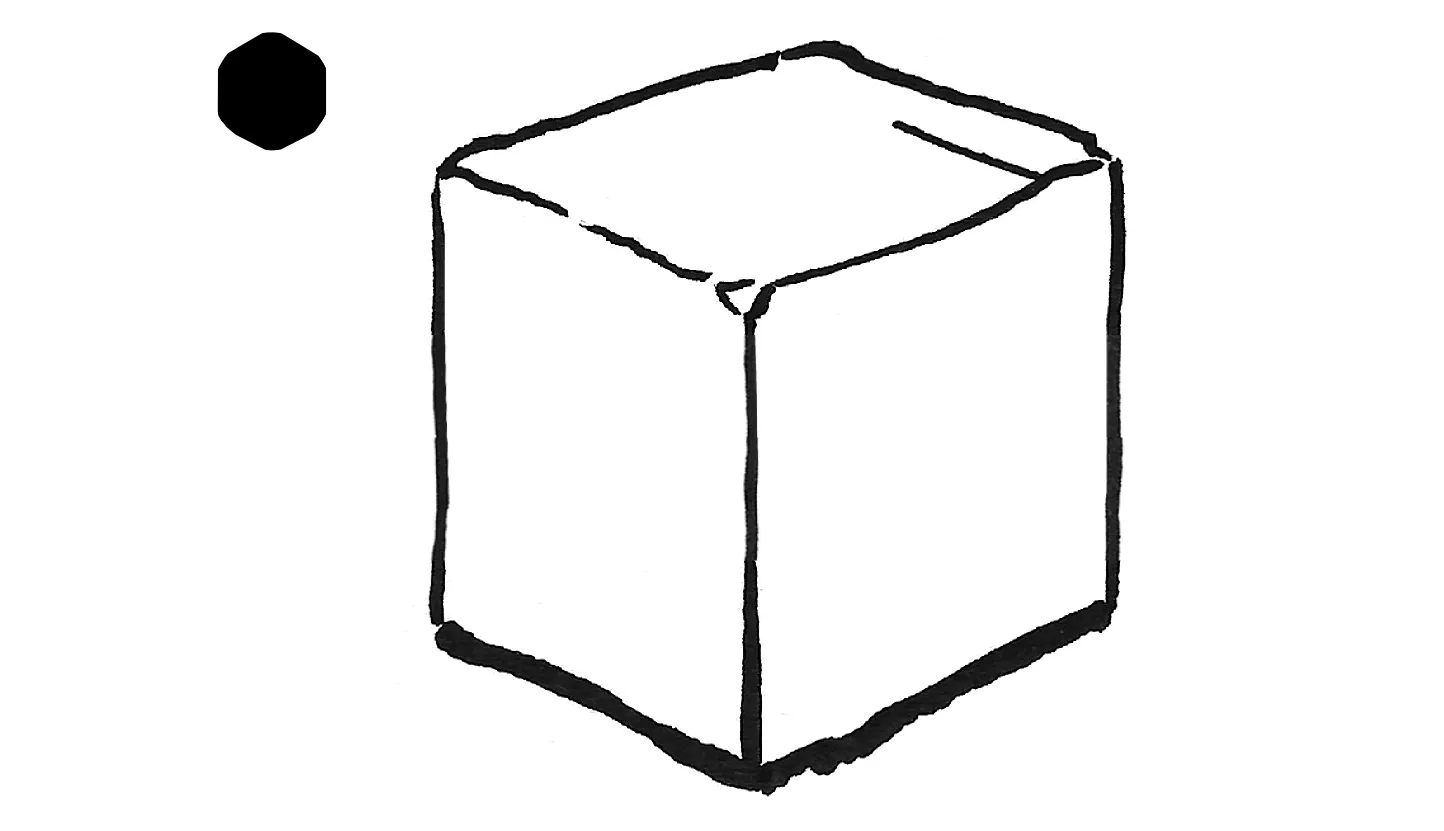
▪ Moves to any open square (but with range constraints)
▪ Inert: Cannot take or fend any piece
▪ Cannot be taken or fended
▪ Antistrategic significance

Introduction & Comparison to Chess
It isn't strictly necessary to know how to play chess in order to play Veney, but chess is indeed the starting point for the basic shape of the game. As an overview, the following list summarizes the game's significant twists on the rules of modern chess (or other regional and historical iterations of the chaturanga game):
- There is no check. Perhaps most significantly, “check” is not called or enforced as in chess. A player in check isn't required to notice it or to move out of check.
- Checkmate must be “followed through.” Checkmate is performed by actually taking the piece in question. This is significant as a way of committing to checkmate, due to the possibility of double-checkmate (see next point).
- Two-way checkmates are possible. If a player is checkmated, it may be possible for them to checkmate in return. If they see this possibility and seize upon it, then both players have lost. This is like a draw, but worse, because you're both dead instead of both alive. (This double-checkmate possibility is truer to a sword fight and provides a small sense of simultaneity, albeit simulated, to approximate the effect of both adversaries being able to make movements at the same time.)
- More checkmate-able pieces, fewer checkmate-ing pieces. Each player has two pieces which are at risk of being taken for a checkmate: the Self and the Sword (or sometimes Dagger), and only one kind of piece which is able to perform a checkmate: a blade, namely the Sword.
- Replaceable pieces. Most pieces attacked are not “captured,” but rather returned to their owner, who often keeps them in reserve and can put them back into play (the inverse of Shogi, wherein pieces are captured and converted). This is to emphasize the nature of competing over immaterial geometry; A deflected attack may simply be reprised without having materially lost anything. As in fencing, the emphasis is on the position.
- Lost pieces. A losing position can, however, lead to the actual loss of pieces. You may expend all the tricks up your sleeve, become suddenly disarmed, or injured. Therefore, pieces are sometimes lost and removed from the game without going back into reserve, just like in chess.
- Reserved pieces. Each player starts with additional pieces in reserve which can be put into play. Pieces can also be withdrawn off the board into reserve.
- Rock, Paper, Scissors. Each piece has the ability to remove only certain other pieces from the game, like rock-paper-scissors, and via different techniques.
- Special abilities. Certain pieces interact with each other uniquely and execute special moves, like trading places or immobilizing the opponent's Sword.
- Passing is allowed. One may choose to “pass” a turn without making a move unless the opponent refuses their pass.
- Double-moves. The players often make two moves or actions in one turn. For example, when the Self moves, the Sword can also move. There are several vectors for double-moves, but they never combine beyond a limit of two moves total.
- No promotion. Neither pawns nor any other piece can promote. Pawns are compensated with other qualities, such as never being permanently lost.
- Stepping-stone pawns. Each player can use their “engagements” (pawns) as stepping stones which grant a second move with the same piece that took the pawn's square. This allows for more complex and surprising movements.
- One piece is shared. The free engagement, a pawn which starts in the center of the board, can be controlled by either player.
- You must take risks. Some pieces are constrained by distance to your checkmate-able Self piece. One purpose of this is that in order to attack your opponent, you must bring forward your critical piece, thus risking its safety in return.
- A board of boards. To achieve the above described range constraints, the board is subdivided into four measures, one successively after the next in a row between the two players. For certain pieces, the constraints of these measures act similar to the “fortress” area of the board in xiangqi and janggi.
- Room to retreat. Each player starts with space retreat into.
- …and the board may reset. It's possible for one player to retreat and reset the entire board without starting a new game. However, attempting to do so may temporarily put that player's pieces at risk until the reset, and you can only do this a limited number of times (or not at all) depending on prior agreement.
- Variable setup. The starting positions of your pieces can be varied to preference or to explore more effective positions, and the process of setting up can optionally be made a part of the game. Custom setup can also be used to determine which player makes the first move.
- A shared axis of attack and defense. Where chess games are played through subterfuge and networked entanglement across a wider field, the shape of this game is much narrower and more direct; it can be thought of in terms of a more condensed game of chess taking place as a gateway between two attacking / defending poles.
- Breaking the rules is a part of the game: A move which breaks the constraints laid out for that piece can be simply called out and reverted or seized upon as vulnerability for attack.
- Chaos & Order are intentional themes. The game is, at present, intentionally over-complicated and open to experimentation, interpretation, and improvement. It will probably change and develop over time—as have the tactics and conventions of both chess as well as weapons systems like the blade.
All of the above are designed to make a chess variant more akin to fencing, but the actual cumulative result of these abstractions is arguably far less apprehensible (and certainly less intuitive) than any kind of physical fight. Ultimately, what it amounts to is open for interpretation.
Three Precepts of Spirit
-
The ideal set is made with found and collected rocks, shells, bones, and other bits of this and that.
-
You can play a casual game with one complete set, or you can play for keeps in a formal game using a token from your own collection as your Self piece; at the end of a game, the checkmated player gives their token to the winner. If you both die, you trade and keep one another's tokens.
- Optionally, some may choose to call their unique Self tokens something special. It is still the basic Self piece for all intents and purposes, but you could also call it your Fighter or your Fencer; you could say that traditionally one player in your set is the Fool and the other is the Devil; or you could call your token by the name of a character it's meant to embody. It may be unclear whether you play as yourself or as a persona.
If you want to quickly get a makeshift set together in order to actually play, you can simply use marked/modified checkers and chess pieces, things found around the house, or even just draw identifying letters or symbols on simple rocks, on coins, on pieces of paper or cardboard, bits of tile or wood, etc. You could also carve or sculpt pieces from all kinds of materials; your options are endless. Take a trip to the hardware store. It's always better to be creative than to be hampered by any kind of dogma. What I'm offering here is simply my own version.
It's also possible to play with half a set, missing many of the non-critical pieces. (See: Custom Rules & Extra)
Playing with Sand
The lengthy complex of rules which follows can be viewed as an experimental sandbox* of game mechanisms and fencing-analogues. Things will change, get dropped, merged or refined over time. This isn’t quite an “open beta,” because there’s no product; there will never be a final version. But it’s something like that.
Since there are just so many special moves and side rules to remember and thus an ever-present possibility of wandering into a technically illegitimate position, I would like to emphasize a more casual culture of play and at most a preference for lenient piece-penalty as the norm for untenable moves during any moderately competitive match, and of course only when called out. This way, it's almost as if breaking the rules is allowed** but with high risk, since knowing the rules—knowing the whole system in detail—is always more effective. To put it in fencing terms, aggressively blundering in bad form can certainly get you somewhere, but a more skilled opponent can capitalize on those mistakes. In game terms, the rules themselves and adherence to them are just another level of gameplay.
*To sort of misuse the term
**Within sociable, obvious limits distinct from deceptive cheating
Overall Play & Goal
The goal of the game is to use your blade to checkmate your opponent either by touch (taking the Self piece) or by disarm (taking their only blade piece) while defending against checkmate in return.
On your turn, you may make one or possibly two of several actions.
- Move: Move one of your pieces already on the board to an open square.
- Take/Fend: Move one of your pieces to a square where it takes or fends another piece.
- ...You can do either of the above with the free engagement, a piece shared by both players.
- Place: Place a piece from your reserve onto the board.
- Withdraw: Put one of your pieces already on the board back into reserve.
- Pass: Pass a turn and do nothing.
- Special Move: Invoke various special moves and aspects of your pieces to perform certain actions not described above.
Additionally, before taking any of these actions, you have the option to first reposition the free engagement if it is not yet in play and then take your regular turn. (More on this later, see: free engagement).
You also can call out an opponent's untenable move for a penalty (or not, depending on how you agree to play), but this isn't a move.
The Board
The board consists of 64 spaces arranged in a 4x16 square grid, like a chess board cut in half and put back together in a longer, narrower configuration. The two players sit facing each other on either end of the board, like the fencing piste.
The board is additionally divided lengthwise into four measures, each of which is a 4x4 square grid. The line dividing the middle two measures can also be said to separate the board into two sides, your side and your opponent's. Some more terminology follows: The measures, when viewed from your own perspective, can be called your first measure (nearest to you), your second measure (next nearest), your third measure (the first which crosses onto your opponent's side of the board), and your fourth measure (the furthest from you). Your fourth measure is your opponent's first; their fourth is your first.
The squares are shaded in an alternating pattern, like a chess board. This is not strictly necessary in chess, but here it serves a mechanical purpose for a special piece. Each player should have a light square on the left end of their nearest step (W1 is a light square).
The sixteen lateral rows of spaces, each four-squares-wide, are called steps, representing distance closed between two fencers step by step. The four lengthwise rows of spaces, each sixteen-squares-long, are called lines, representing the lines of offense and defense through which a fencer maneuvers their faculties. (These are named in contrast to chess, where the “ranks” and “files” of the board evoke masses of soldiers arranged for combat in a field of battle.)
Any row of four diagonally adjacent squares can be called simply a diagonal, as they are in chess. Note that each diagonal spans the same distance (four steps) as a measure.
To specify squares, the steps are labeled 1–16, and the lines are labeled W, X, Y, and Z. (Three of the letters of A–D are taken by the names of pieces, so shorthand notation is made clearer by not reusing letters. XYZ and W also nicely evoke three-dimensional space, for fun, but if this makes things more confusing for you, it's okay to call the lines A, B, C, and D.)
To make a set more usable for Blind players, one can affix flat rails along the lines of the grid, like a Senet board. Skewers, chopsticks, or some other straight wooden crafting sticks will work. Small rocks can't fall over like chess pieces do, so they're well suited to this, and the railings have an added benefit of ensuring that results of a Cast Piece will be determined with certainty. Note that the free engagement will need to be able to sit affixed at an intersection atop these rails—using a piece from a set of jacks should work. Texturing the alternate squares creates an alternating pattern.
Types of Pieces
Pieces can be instructively thought of as belonging to one of three categories: Critical pieces (Self and Sword or Dagger), Virtual pieces (engagements and the free engagement), and Technical pieces (Cloak, Balance, Lantern, Jutsu, and Guard).
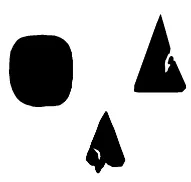
- Critical (Major) pieces: The loss of these is what results in a game over. You need both a self and a sword to fight with. One piece is your life, and the other is how you take life. One (the sword) can take all, and the other (the self) almost none. Both are irreplaceable. (Dagger is considered critical if Sword is lost.)
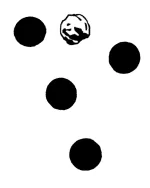
- Virtual (Minor) pieces: The purpose of the engagements is to outline and facilitate the movement and strength of your sword, to allow for more flexible, complex, and surprising actions by other pieces, and to provide controlled points for your better pieces to defend. They cannot remove any other piece from the game permanently, and they are entirely replaceable. They help to structure the board and the shape of play, like pawns, but can accomplish very little on their own. They also have a virtual function as a sort of wager when expended for a double-move. Thus they can be thought of as markers of the sword's virtual extensions or as an aggregate piece made of multiple pieces.

- Technical (Middle) pieces: These are expendable and often replaceable like engagements, but they are more singularly valuable as they have greater mobility and more complex movements, as well as special moves and aspects that can quickly reshape a moment in the game. Their special uses make them effective on their own, but they are still not capable of taking a critical piece for a checkmate. They can only take or fend other technical pieces and engagements. You can also lose one permanently, to your detriment, but it's not game over. They function on a “technical,” augmentational level to support your critical pieces, to fight for space, and interfere with your opponent's position.
Additional categorizations of pieces useful for explanatory shorthand are the blades, referring of course to the Sword and Dagger, and the armaments, which includes the Sword, Dagger, and Guard—these pieces are vulnerable to disarm. The armaments are all constrained by movement to the Self in some way, but are also allowed double-moves in concert with the Self. The Dagger and Guard are sometimes called the lesser armaments (they're not as powerful as the Sword).
One may also speak of the starting pieces (the engagements, Sword, Self, Cloak, and Balance) and the additional reserve pieces (the Jutsu, Lantern, Guard, Dagger, and Ruin/Rien). The fighting pieces refers to all the pieces other than the Self and Ruin/Rien.
The fendable pieces are all except for the Self, Sword, Dagger, Guard, and the Ruin/Rien (see next section on fending).
 Note: The Ruin/Rien, an optional piece, does not fit into this framework. It's most like a technical piece, but its inert role among other pieces disqualifies it from most everything of what the rules have to say about technical pieces.
Note: The Ruin/Rien, an optional piece, does not fit into this framework. It's most like a technical piece, but its inert role among other pieces disqualifies it from most everything of what the rules have to say about technical pieces.
This diagram is not important to understand. Nor was this entire section. But you might wish to.
Terminology: Take or Fend?
There are two different kinds of “taking” a piece in this game: take and fend. When an opponent's piece is taken, the attacking player literally takes the piece and removes it from the game permanently—just like in chess. Most often, however, a piece is instead fended, i.e. returned to its owner's reserve. Your pieces can also be withdrawn. These distinctions make it necessary to clarify our terminology in order to talk about the game.
Fended: When one piece attacks another in such a way that the latter is returned to its owner instead of being removed from the game entirely, we say that the attacking piece fends the other. The piece has been fended or fent, i.e. abstractly turned away, fended off, derailed, subverted, supplanted, surpassed, etc. but not eliminated. (You can imagine, in the mechanics of fencing, a movement which transfers one interaction into another in a long series of strategically transmuting engagements). You can either hand the piece back to your opponent or put it in their reserve yourself.
Taken: When one piece takes another and permanently removes it from the game, we say that the attacking piece takes the other. The piece is taken or lost, depending on perspective. (For flavor, you could say that a piece is “lost,” or “destroyed.” The choice of word is irrelevant to the gameplay. For example, an actual cloak that ensnares a sword and is then cut loose can be understood to be destroyed. An actual dagger disarmed by a sword would not be destroyed, but rather lost. More to the point, the main analogy here is that one fencer has lost something; lost tempo, distance, control, composure, balance, blood, limb function, armament, etc.)
Discarded: The player who removes a taken piece from the game “discards” the piece.
Withdrawn: When a player spends a turn putting one of their own pieces back into reserve, that piece is “withdrawn” from the board.
Removed: This is an unspecific word that could be used to describe any of the above. (“The piece is removed and discarded.” / “The piece is removed from the board and put into reserve,” / “The piece is removed from the game,” and so on.)
Captured: This word is not used here, or at least not in the same way as in chess, because the battlefield analogy of raiding and captive-taking does not apply. The way that Shogi involves converting captured pieces is instructively not applicable. The one place this word does appear is to describe the Cloak's special move of “blade capture,” an entirely different thing, when a fencer grabs their opponent's blade or otherwise restrains it from movement.
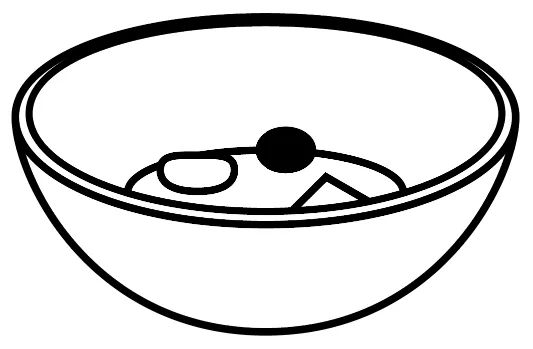 Pieces that are taken/lost should be put into a shared discard pile, not put into your own reserve. (This is actually important due to certain game elements like the self-negation of Jutsu-takes-Jutsu.) The pieces can be discarded:
Pieces that are taken/lost should be put into a shared discard pile, not put into your own reserve. (This is actually important due to certain game elements like the self-negation of Jutsu-takes-Jutsu.) The pieces can be discarded:
- Back into their bag/storage container
- In a dish or tray beside the board
- In a pile used by both players, away from the immediate edge of the board
- Atop a handkerchief, paper or book used to designate a discard area
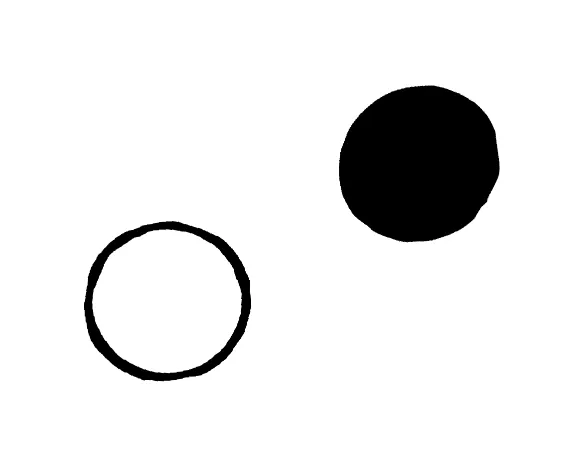
Note: The natural impulse to speak of “taking your own engagements” is technically incorrect, because these stepping-stone engagements are not “taken” in the sense defined for the game's rules. Nevertheless, you would be understood.
To “see” a piece is a chess concept with applicability here. A piece that “sees” another has a movement pattern which could land on the square occupied by the seen piece, whether or not it can actually take or if it would be wise to do so.
Attack: This is a flexible term which may describe the actual move to take/fend/capture or just the possibility of it, i.e. “seeing” with actionable threat.
Summary: Taking & Fending
(Black attacking in below chart)
It's not necessary to immediately review these rules in detail, but here's a chart for future reference. In general, the take / fend relationships are as follows:
- Critical pieces and armaments are never fended, only taken. All other pieces are fendable.
- All pieces fend all non-armament, non-critical pieces (unless they can take).
- Armaments (Sword, Dagger, Guard) are only taken by disarm, except for Jutsu's subversion of Guard.
- Blades take middle/technical pieces according to certain piece-to-piece relationships.
- Middle pieces take each other via rock-paper-scissors loops.
- Engagements (including free engagement) are never taken, only fended, and can take no pieces.
All your pieces (except Ruin) can also step-stone your own engagements.
The Ruin/Rien is inert and not included here.
Cloak-Lantern is a two-way RPS (rock, paper, scissors) loop; of the two, the piece that attacks the other remains. Balance-Guard-Jutsu is a three-way traditional RPS loop. The Jutsu itself is a one-way self-negating RPS loop; both Jutsus destroy each other on contact. Balance is the one piece with the least ways of being taken (just one way or none if you don't have your Guard anymore).
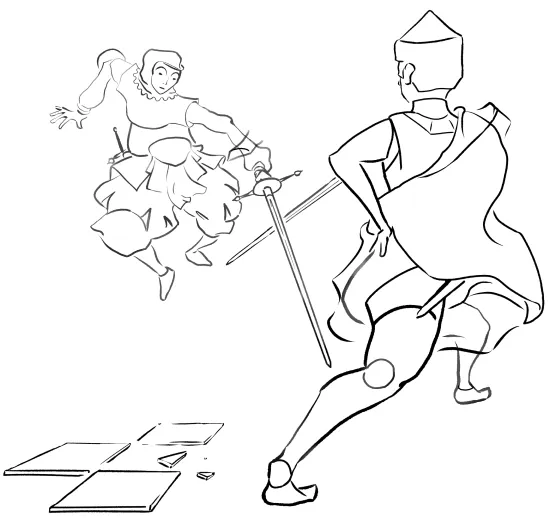
The Pieces, Their Movements & Specials
A Note on Abstraction
Most of these pieces are named after real things which can be used in fencing, but the game does not necessarily insist that they literally represent those things. It is, and it isn't. The Cloak, for example, is thought of as a cloak because that's evocative and interesting, and it needed a name, but it's also just another one of several pieces, one of several dimensions, so to speak, which outline an abstract representation of positional interaction between two blades and two bodies.
Specials: “Aspects” vs. Moves
The pieces' special moves can be divided into the categories of moves and aspects. A special move is available conditionally based on interaction and/or movement between two pieces, initiated by the one performing the special move. An aspect is either constantly in effect or available to invoke at any time, not necessarily by moving a piece, and sometimes initiated by a different piece to whom the aspect doesn't belong.
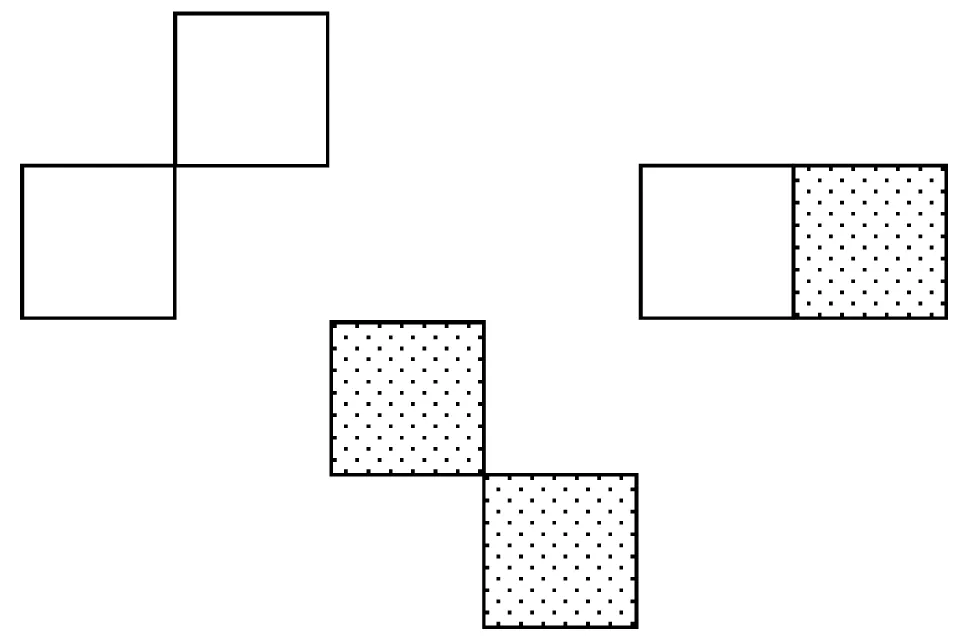
For the purposes of these rules, the term “adjacent” refers to the position of two pieces which are in squares that touch either orthogonally (sharing a side) or diagonally (sharing a corner).

Self
The Self piece is analogous to the king in chess. Its basic move is the same: one square in any direction, orthogonally or diagonally. Additionally, it can lunge forward and return backward (straight or diagonally) more than one space, depending on which measure it moves from. The Self cannot leap over pieces.
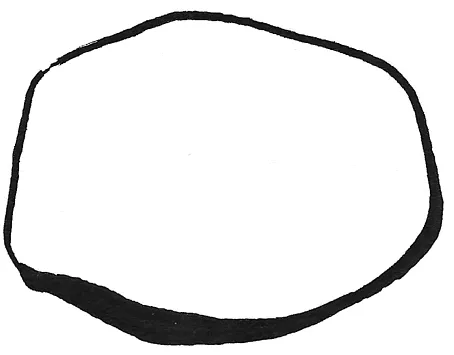
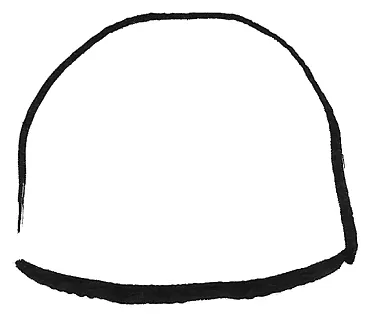
The sequence to remember is 4, 3, 2, 1. From the first measure, the Self can lunge forward (or diagonally forward) up to 4 spaces and only step back 1 space. These distances are increased or decreased as you go up and down the measures. From the second measure, the Self can lunge forward up to 3 and return as many as 2 spaces. In the third measure, it can lunge forward 2 and return as many as 3 spaces, and in the fourth measure it can only step forward 1 but can return a full 4 spaces.
Below: Some examples of the Self's available movements.

Taking: The Self can only fend your opponent's fendable pieces as well as the free engagement, and can move by stepping-stones through your own engagements.
Vulnerability: Can only be taken by the Sword or Dagger (checkmate).

Aspect: Concert
When the Self moves, the Sword or an armament may also move simultaneously, in concert with the Self. The two pieces move without blocking one another (as with a “castling” move in chess).
The armament's range constraint is based on the position of the Self at the end of this double-move.
Concert is performed by picking up both pieces in one hand, Self first (similar to the rules of castling in competitive chess), then placing them, either one first. Handling the pieces as such may take a bit of practice and dexterity. For accessibility reasons, this whole formality can be skipped by simply declaring the move out loud just prior, e.g. “I move the Self and Dagger in concert.” Or nevermind any of this fuss.
Note: Self and armament moves in concert can be combined with stepping stones, but the engagements don't grant an extra move (because you must pick one method of making a maximum two moves). For more on this, see Double-Moves.
Special move: Retreat
If the Self steps back four steps in the first measure to leave the board entirely (requiring four turns), this player has played a retreat. The board is reset and play continues without starting a new game. However, lost pieces stay discarded and are not replaced on the board or in reserve upon retreat.
Retreats can be limited to a certain number, to no retreats, unlimited retreats, or with different allowances between players of different skill. (One retreat each is the basic choice, which approximates the length of a piste, roughly two boards, and thus the distance allotted to each fencer if each square represents about a foot of distance.)
The players reset to the default baselines as if setting up a new game (on steps 3 and 5 for one player, 12 and 14 for the other) using the pieces they already have on the board and all four of their engagements. If you had additional pieces in play and more than will fit on your starting step behind the engagements, you may either place them on the next step behind or put them into reserve. The free engagement is reset to the center.
If the game was started using custom setup methods, the reset can be done using the same process but again with only the pieces that were already on the board prior to the reset.
Retreat is impossible if your opponent's Self piece is on your side of the board. Note, however, that this could be used to your advantage to bait the other player forward with a step back, when your aim is not to continue withdrawing into a reset but rather to attack.
The final step of a retreat necessarily precludes movements in concert or any other double-move; after one player initiates a reset of the board, it is the other player's turn.
A game reset upon retreat has not ended, and neither player has yet won or lost (unless the retreat limit has been accidentally surpassed, which is considered a resignation).
It is not possible to retreat off your opponent's end of the board, which has to do with the abstracted notions of directionality which define the space of the game. For more on this, see the notes on “Directionality” in the Impasse & Other Edge Cases section.
Below: The Self retreats off the board
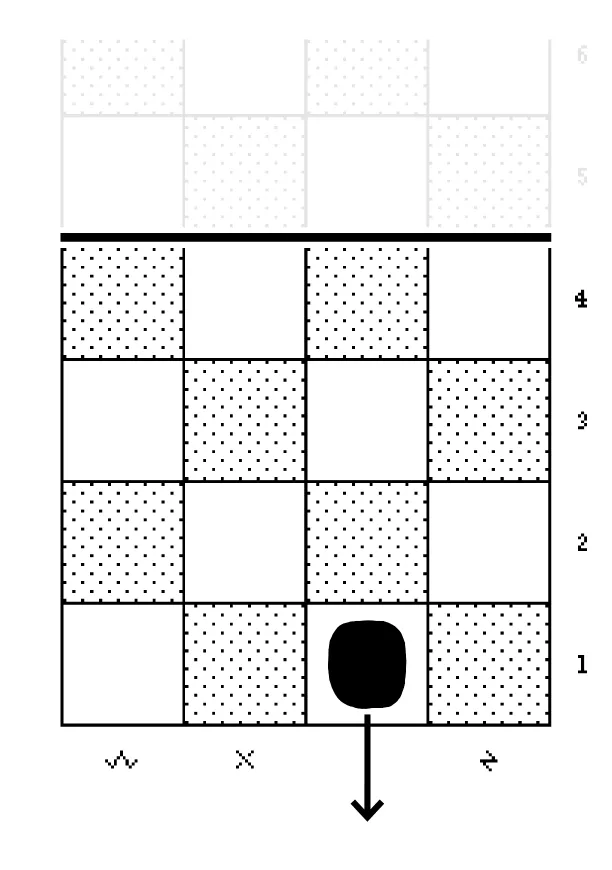


Sword
The Sword piece is analogous to the queen in chess. It is your most powerful piece, used to checkmate, and you only have one. If you lose your Queen in chess, and your opponent still has theirs, it is commonly understood that you are doomed. This isn't necessarily always true in chess, but with regards to a sword it is a near certainty.
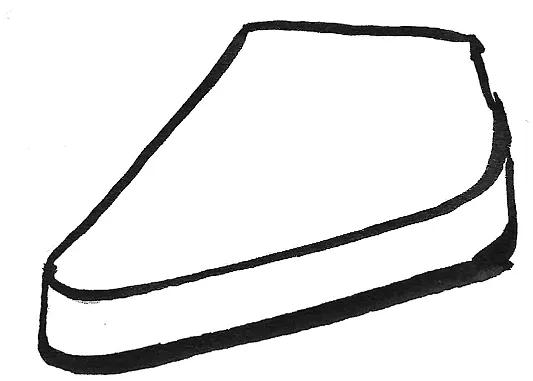
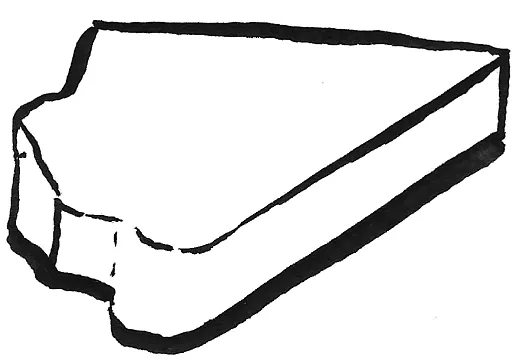
The Sword moves like a queen—any number of spaces in any direction, orthogonally or diagonally—but only within certain range constraints. It can only move in a measure either the same as that which is occupied by the Self or one measure outside of it (in either direction), plus any step further if you have at least one engagement in that step. (Thus, a Sword can certainly never reach an opponent so long as both players' Self pieces haven't advanced out of their first measure.)
The Sword can leap over any of your own pieces except the Self (since you can't, or shouldn't, pass a sword through your own body).*
*The Self's special “concert” can allow a movement, similar to castling in chess, which circumvents the rule against a Sword or Dagger leaping over the Self. This doesn't always work—you may have limited safe or available squares, and the Self cannot end a concert move in the same square where it started.
Below: An example of the Sword's range [within the dotted lines] and available movements [actual movement capabilities indicated by the arrows].

Your Sword is the primary piece used to take the opposing Self for checkmate, although the Dagger technically can as well.
Taking: The Sword fends all opposing fendable pieces unless it can take as follows…
- Balance is never taken, only fended (shadow-stabbing).
- Lantern is always taken, directly (shattered).
- Cloak is only taken in counter-action, by cutting free from its special move (severed).
- Jutsu is taken indirectly, by fending Balance (shadow-stabbing).
- Engagements are only fended.
- Armaments — Sword, Guard, and Dagger — are taken only via conditions of disarmament.
- Self is taken directly, as checkmate.
- Ruin/Rien cannot be taken or fended.
Vulnerability: The Sword cannot be fended, and can only be taken by the opposing player's Sword (or Dagger, if their Sword is lost) via disarm conditions.
Special move: Cavazione (Offensive)
You may trade your Sword's place with an opponent's blade by cavazione when the two pieces are adjacent (orthogonally or diagonally) both on your opponent's side of the board.
This can be the second in a double-move by stepping-stone (see engagement) or a move in concert with the Self.
Special move: Opposition (Defensive)
Your Sword may push an opponent's blade by opposition when the two pieces are in-line with one another, unobstructed, and both on your side of the board. This move can travel any distance into consecutive open squares, in a straight line, without moving your Sword beyond the center line.
This too can be the second in a stepping-stone double-move or a move in concert with the Self.
The opponent's blade may be pushed beyond its normal constraints, potentially an effective method of trapping a blade for disarm.
Below: Examples where the black Sword initiates Cavazione and Opposition

Where is the parry?
In a game based on fencing, one might imagine the action of a parry to be a critically important inclusion. Rather, in chess and all chaturanga-like games, your effective preplanning and the nature of the gameplay in general consists of deflecting, derailing, and interrupting your opponent's attacks or threats (i.e. projected attacks)—This already is an abstract parrying-like mechanic inherent to chess.
Furthermore, it makes sense that something as central to fencing as parrying would have to be more abstracted and mechanically dispersed than simply making a move which says “I parry the attack.” There might as well be a move which says “I fence.” (To press the point, it can prove somehow both game-breaking and a bit useless to allow players to merely intercept what would otherwise be a checkmate. There are cumbersome ways to make it work, but it misses the point. This is all made unnecessary by simply embracing a more fluid, abstract interpretation of the parry.)

Engagement ...or “pawn”
The Engagements (called “pawns” for short) move like pawns in chess, one step forward into an open square, or one step diagonally forward to take an opposing piece.
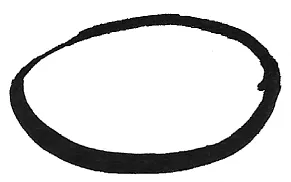
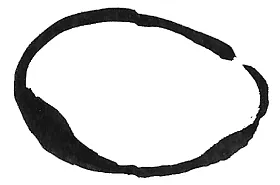
Similar to chess, they can advance more than one step within your second measure. Since the board is longer, we allow them to move forward 1–3 spaces until they reach the center line, as long as they aren't blocked (not only on their first move, as in chess). Engagements cannot leap over pieces.
Below: Pawn movements
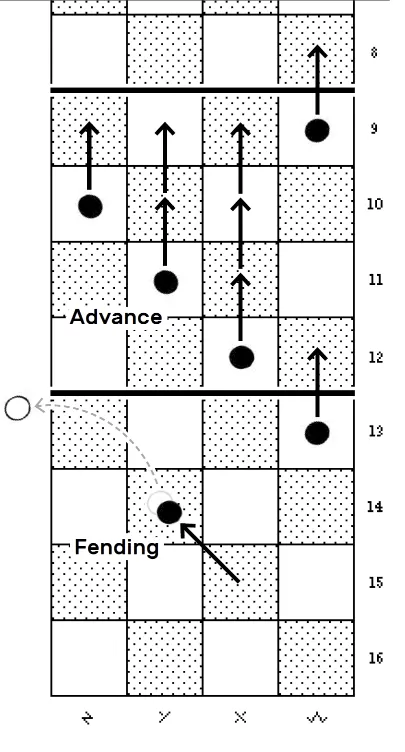
Taking: Engagements fend other fendable pieces, but take nothing.
Vulnerability: Engagements are fended by all pieces. Engagements are never taken.
Aspect: Stepping Stones
Any of your own pieces may move onto the square occupied by one of your own engagements, which is then removed from the board to reserve. This is called a step-stone move, or simply stepping stones.
The piece that moves by stepping stone is also granted the option to make a second move from that square on the same turn. This is called a double-move by stepping stone, or a double-move by engagement.
A double-move never leads to a third; you can take two engagements but the second doesn't grant another move. You are also making a wager with stepping stones; is it worth the temporary loss of a pawn? If you ever want to replace it, you will need to use a whole move to do so.
Note that you can use an engagement to step-stone on another of your own engagements, which does grant it an additional move. It may open a line. There isn't really much of a reason to do it.
Below: Three examples of double-moves with a stepping stone. In the white example, the Sword actually moves by concert.
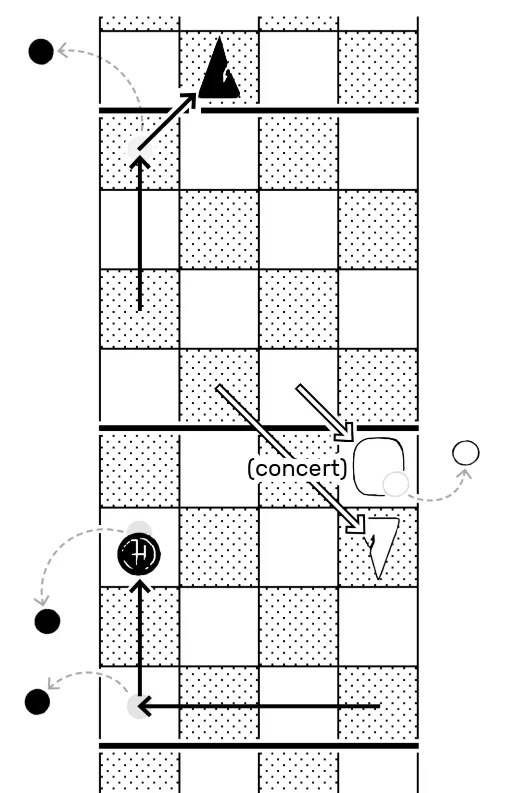
Special move: En passant
Just as in chess, your pawns are vulnerable to en passant when they move more than one space and pass an opposing pawn that threatens the first of these squares. The opponent's pawn may fend as if yours had made only a one-square move.
Below: Three examples of en passant
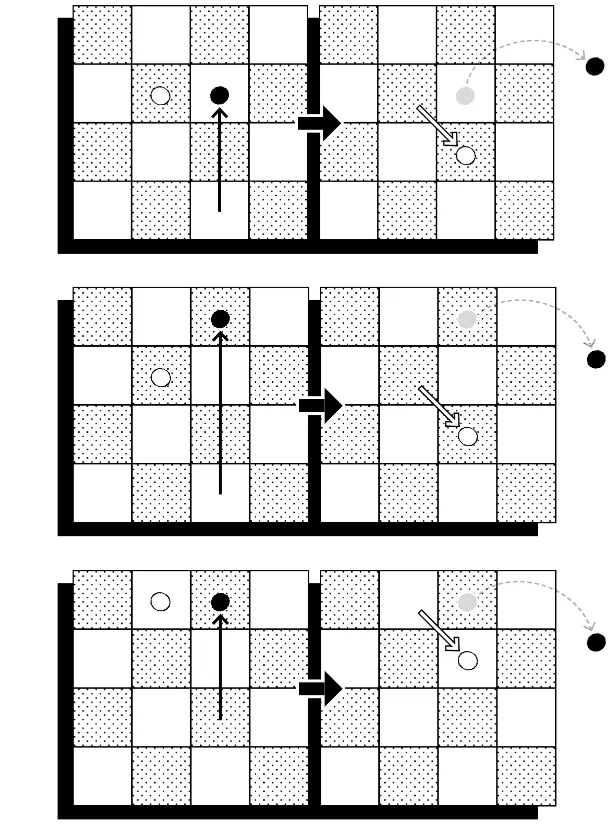
Why do pawns do that?
You may be interested to know that the purpose of the extra-step pawn moves, just as in chess, is simply to get the game started faster and to rapidly build opposing structures of engagement.
Chess defines this rule differently, but here, these pawns can move first one square and then later move two squares; or even, rarely, one square (into the second measure), and later three squares.
En passant is intended to ensure that the extra-step allowance does not backfire and circument the same process it was meant to accelerate.
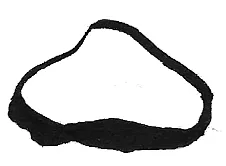
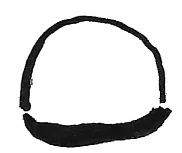
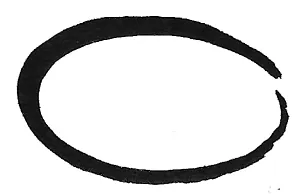
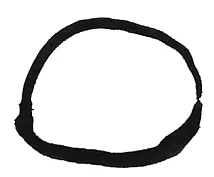

The Free Engagement
...credit to The Verdigris Pawn, by Alysa Wishingrad
This shared piece begins the game in the exact center of the board, on the intersection of the central grid lines, out of play. To put it into play, one player may move it into any open space of the four squares it touches (this move cannot be used to take a piece). From there, a player may move the free engagement as follows:
When in play, the free engagement can only be moved by the player whose pieces correspond to the color of the square (black or white) occupied by the piece at any given moment. This player is said to have possession of the piece. Possession also allows a player to leap over the free engagement with a blade, to use it for a double-move by stepping stone, or to perform en passant.

When moving without taking, this piece moves like a king—one square at a time in any direction orthogonally or diagonally on empty squares. When taking pieces, it moves only diagonally forward, as if one of your own engagements.
Below: Four different kinds of movements by the free engagement
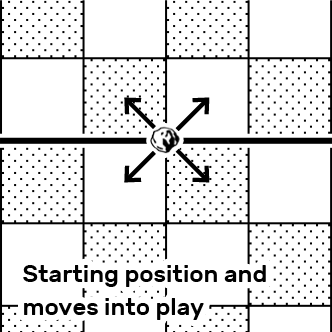
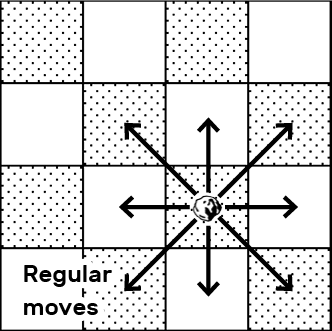
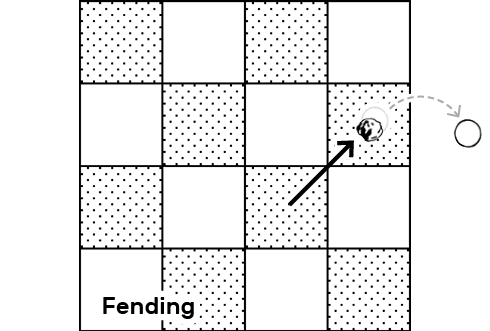
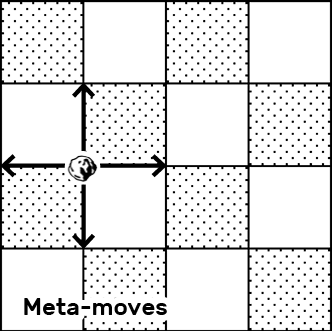
Taking: Like a normal engagement, the free engagement fends other engagements and fendable pieces, but takes nothing.
Vulnerabiliity: The free engagement can be fended by any piece. When fended, the free engagement returns to its starting point.
While the free engagement sits out of play, either player can reposition it one point along the intersections of the grid before making a normal move for their turn.
These meta-moves let the players attempt to advantageously pre-position the piece before it actually enters play.
- A meta-move must be made before any normal move of your turn; however...
- You may meta-move and then pass. (For the purposes of the rules of passing, this counts as a pass.)
- You cannot meta-move and then declare intention on the same turn.

The free engagement never moves more than one square like a normal engagement may.
If the free engagement is pushed back and forth on the same two squares, repeating a position three times (i.e. if it is pushed back to where it just came from twice in a row), the player whose turn it is may choose to end this cycle by returning it to its starting point and then make any other allowed move.
This piece represents a point of physical contact between two engaged blades which is disputed and subverted by the pressures of opposing forces.

Cloak
The Cloak is analogous to the knight in chess, moving one square orthogonally plus one square diagonally (or vice versa) away from where it started the move, in an ‘L’ pattern. The cloak leaps over any pieces in its path.
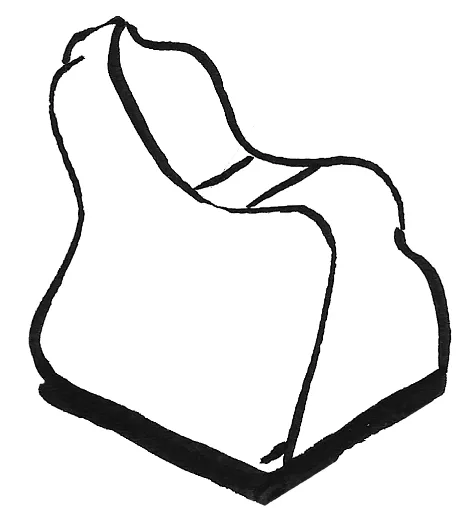

Below: The Cloak's basic movement
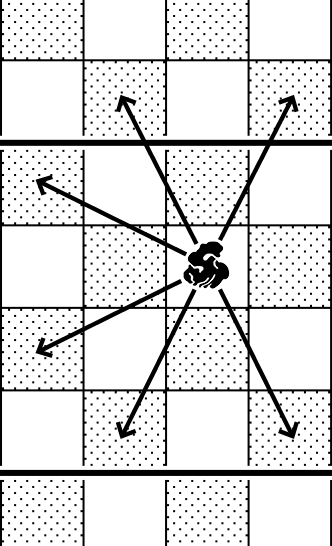
Taking: The Cloak fends all your opponent's fendable pieces and takes only the Lantern (extinguished).
Vulnerability: The Cloak can be fended by all pieces and is taken by the Lantern (burned) and when a blade ends its Blade Capture move (severed).
Special move: Feign
When the Cloak and the Self are adjacent to one another (orthogonally or diagonally) they can switch places as a double-move turn.
Below: The Cloak and the Self trade places by feign
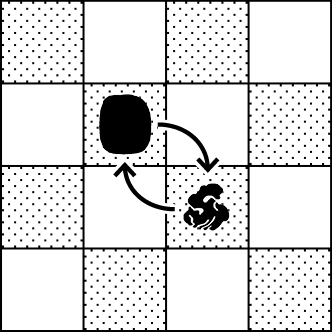
Special move: Blade Capture
The Cloak can attack the Sword or Dagger without taking or fending it; instead, it sits atop the blade and keeps it pinned in one place.
The owner of the captured blade may not immediately free it. They must spend a later turn if they wish to remove the Cloak (which may also be done in concert with the Self's movement). The Cloak is then destroyed. However, if on some future turn the Cloak is still in play upon a captured blade, its owner may move it back off, releasing the blade and saving the Cloak.
Blade capture is an attack on the blade, thus it may contribute to disadvantage conditions for disarm. Disarming a captured blade fends the Cloak.
Your blade/s may not leap over your Cloak while it captures (because they cannot leap an opponent's piece).
You may not make a move with the Cloak that begins and ends with blade capture. For example, you can't jump your Cloak from your opponent's Sword to their Dagger, capturing back and forth turn after turn (or even one such move). Also, you may not make a double-move by stepping stone to leave and immediately recapture a blade.
While a blade is captured by the Cloak, neither the blade nor the Cloak can contribute disadvantage to the disarm of a separate armament.
Why can't I remove the Cloak with an attack from another piece? The timing of the imagined scene is like this: an attempt to free your blade momentarily fails (the point of the move), and then you remaneuver to sever or wrest away the cloak. There isn't a moment when you need to try and free it by other means, and you get more out of destroying it anyway. These are also simply the limitations of working with grid squares, abstract pieces, and sequential turns.
Below: The Sword captured by the black Cloak
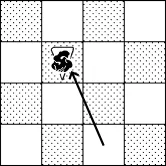



Balance ...or Shadow*
The Balance is analogous to the bishop in chess. It moves one or more spaces along the diagonals, constrained by the edges of the board. The Balance, however, can leap over any piece in its path.
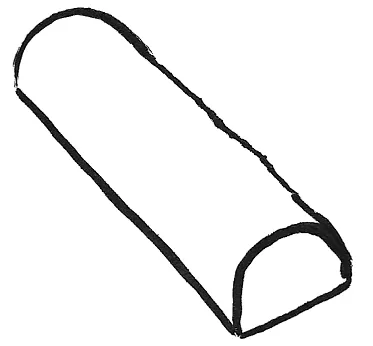

Below: Examples of the Balance's diagonal movements
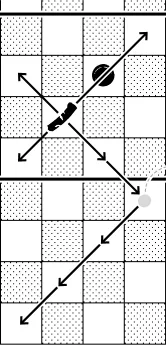
Taking: The Balance fends all your opponent's fendable pieces and takes the Jutsu (transcended).
Vulnerability: The Balance can be fended by all pieces and taken by the Guard (bludgeoned).
Due to its pattern of movement, note that the Balance can only reach half the spaces on the board, like a black-square or white-square bishop in chess, unless placed alternately out of reserve or via the use of its special move, Shift.
Aspect: Control
The Balance in the Self's measure prevents an opponent's Jutsu from entering (by movement or attack), and entering the opponent's Jutsu-occupied measure with your Balance and Self fends their Jutsu.
This can be invoked in the moment in order to fend a sitting Jutsu or prevent its movement into a measure, but cannot be remembered and invoked on a turn later than when the relevant move occurred.
If the Jutsu attempts to attack or move into the measure where Control is active, the move is merely prevented. However, if playing by turn-penalty for untenable moves, the move is prevented and the turn skipped. If playing by piece-penalty, the Jutsu is fended and the turn skipped.
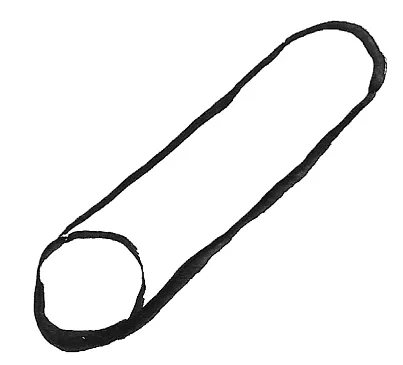
Special move: Shift
The Balance can shift to trade places with the Sword or Dagger anywhere on the board, assuming the blade piece's destination is within its normal constraints.
This move cannot be used in concert with the Self's movement, nor as the second in a double-move by engagement.
Below: The Balance and the Sword trade places by shift
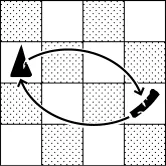
* “Shadow” here is a counterfeit word implying a metaphysical “balance,” in the sense that a shadow is a reflection of the self.
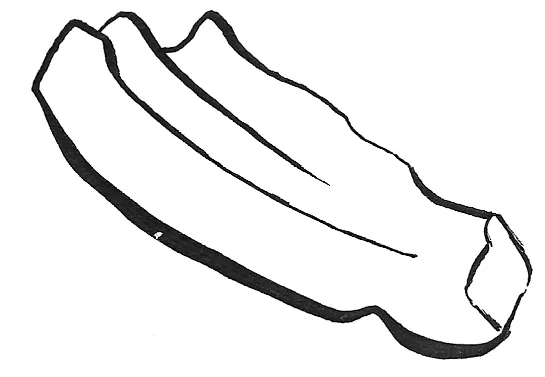

Dagger
The Dagger is an additional reserve piece which can be put into play as a turn (as are all the pieces that follow). It moves like the Sword but cannot leap, and it is constrained to the same measure as the Self and one measure outside—no further extension from the engagements. If the Dagger is left outside of constraint to the Self, it can only move to a square back into constraint with the Self.
The Dagger cannot be used to execute disarmament unless you have lost your Sword.
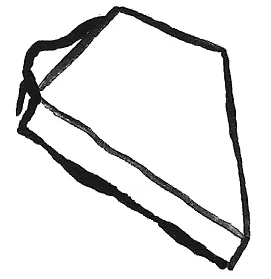
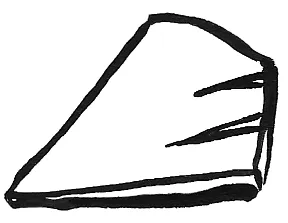
Below: An example of the Dagger's range and available movements.

Taking: Just as the Sword, the Dagger fends all your opponent's fendable pieces unless it can take as follows…
- Balance is never taken, only fended (shadow-stabbing).
- Lantern is always taken, directly (shattered).
- Cloak is only taken in counter-action, by cutting free from its special move (severed).
- Jutsu is taken indirectly, by fending Balance (shadow-stabbing).
- Engagements are only fended.
- Armaments — Sword, Guard, and Dagger — are taken only via conditions of disarmament.
- Self is taken directly, as checkmate.
- Ruin/Rien cannot be taken or fended.
Vulnerability: The Dagger cannot be fended, and can only be taken by the opposing player's Sword (or Dagger, if their Sword is lost) via disarm conditions.
When your Dagger is in play, as it is an armament, you may choose to move it instead of your Sword in concert with your Self piece.
Special moves: Cavazione & Opposition
The Dagger can make use of cavazione and opposition, the special moves of the Sword, but only against the opponent's Dagger.
Aspect: Persistence
If you lose your Sword, but you already have a Dagger in play, you may continue to fight. The Dagger gains the ability to execute disarmament in place of the Sword.
You cannot put your lost Sword back into play, and you cannot put your Dagger into play upon losing your Sword; it must be already active in order to prevent checkmate by disarmament of the Sword.
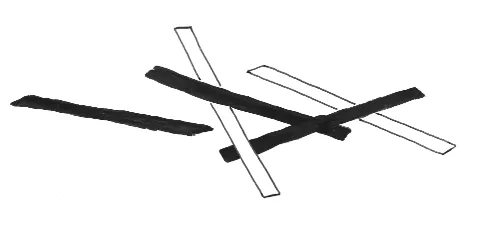
When the Dagger and the opponent's Self are aligned unobstructed by any piece other than engagements, the Dagger can be used for a long-range attack from any distance.
- Success on the attack is determined by chance. The standard method of rolling for this is with a set of five stick-dice. (These could be knucklebones, flat popsicle sticks with one side of each painted black, or square-sided sticks with two adjacent sides on each black, or two-sided round/flat Senet-style throwing sticks. …Or even just consecutive coin-flips. See alternate methods in the reference section.)
- The number of sticks thrown is three plus the number of measures between the two Selves. (At full starting distance, this is a one-in-32 chance of success. At close range, it's a one-in-four chance of success.)
- The attacker throws for their piece color, white or black.
- If Black's throw lands all black-side-up, for example, the attack is a success and constitutes checkmate by touch.
- If the attacker throws only one off-color, the attack misses but grants a short-success distraction effect which allows the throwing player to reposition their Self piece and the Sword anywhere on their side of the board and behind the opponent's Self's step, otherwise irrespective of movement and range constraints, without taking pieces (similar to the piece-repositioning effect of Obscurant Chaos).
You may use the Dagger Throw ability in concert with a Self move. You may also throw as the second in a double-move by stepping stones with the Dagger.
Below: Two examples of Dagger Throw attacks (dashed lines) and three positions with different odds of success (labeled Self pieces)


Guard ...or “Ward”
The Guard moves like a rook, one or more spaces orthogonally (in a step or line), or one square diagonally in any direction—these amount to the "Dragon King" piece movement from Shogi. However, its range is tightly constrained to the Self's measure and one step outside. If a Guard is left out of constraint to the Self, it can only move to a square back into constraint with the Self. It cannot leap over pieces.
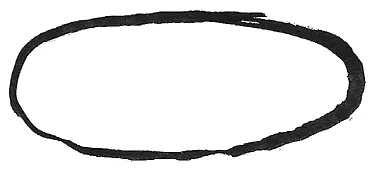

Below: An example of the Guard's range and available movements.
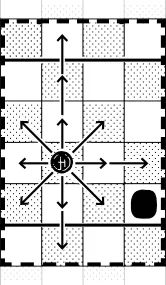
Taking: The Guard fends all your opponent's fendable pieces and takes the Balance (bludgeoned).
Vulnerability: Cannot be fended, and is taken only by the Jutsu (subverted) and by the blades via disarm.
Aspect: Armament
When your Guard is in play, you may choose to move it instead of a blade in concert with your Self piece. It cannot be fended as other technicals can.
Although the Guard is categorized as a technical piece and is named after a defensive concept, it represents something wielded, something steel, and so is considered an armament.
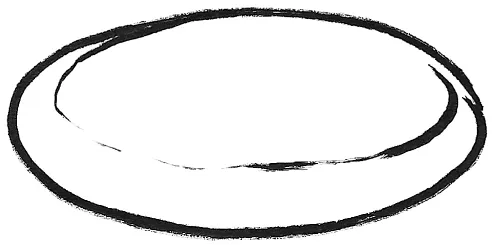
Special move: Deflection
The Guard is able to deflect an armament and push it away if there is at least one open square immediately behind the latter and as long as the Guard doesn't move outside its constraints.
The Guard takes the square of the blade it deflected. If this square is on your side of the board, the opponent's blade is pushed away until it crosses back onto their side, or until it is blocked (by a left or right edge of the board or another piece in the way). If the taken square is on the opponent's side of the board, deflection pushes the blade piece only one square. Deflection “backward” (toward your end of the board) only pushes the opponent's blade one sqare.
Blade deflection does not constitute a move by the deflected opponent, who then takes their normal turn.
This can be the second in a double-move by stepping-stone or a move in concert with the Self.
Below: The Guard deflects the Sword back across the center line; The Guard deflects the Sword sideways to the edge of the board.
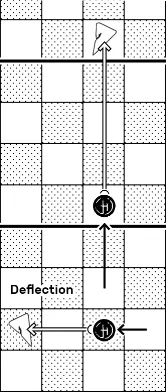
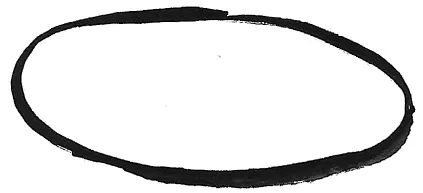

Lantern
The Lantern is a strange piece. Its basic movement is diagonally and orthogonally, like a queen, but it can only move more than one space. Also, it is initially constrained to the Self's measure. When the Self moves out of that constraint, the Lantern moves by flailing either back into measure with the Self or one further, swinging like a pendulum.
The Lantern cannot jump over pieces except those in the adjacent measure it passes into or over when flailing. It can never jump over pieces in the same measure as where it starts a movement (see: “Flail” special move below for more in-depth description of this movement pattern).
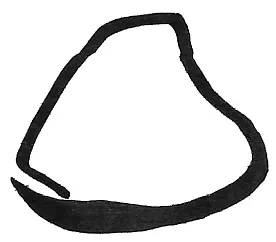
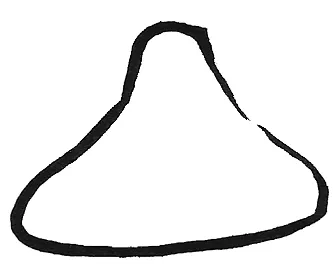
Below: Example sequence of possible Lantern movements within its constraint to the Self, without flailing.

Taking: The Lantern fends all your opponent's fendable pieces and takes the Cloak (burned).
Vulnerability: The Lantern is fended by any piece, and is taken by the Cloak (extinguished) or by either blade (shattered).
Aspect: Pseudo-Armament
When your Lantern is in play, you may choose to move it instead of an armament in concert with your Self piece.
Note that although the Lantern isn't technically subject to disarm conditions, it is nevertheless destroyed by any attack from a blade.
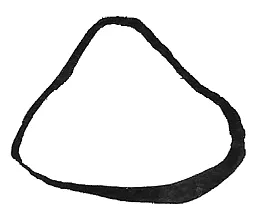
Special move: Flail
When the Lantern is left out-of-constraint by the Self having moved away into another measure, it can move either back into-measure with the Self or one measure further in that direction, on the opposite side of the Self from where it started the move (as if swinging). Also, it can leap over any pieces in the next measure it passes into/over, like a flail whipping around obstacles.
The flailing Lantern can only leap over pieces in the next measure if its path isn't first obstructed by any pieces in the measure where it begins the move. (In fairy chess piece terms, this is like a slide-then-leap move. Think of it as requiring momentum to leap.)
When flailing, the Lantern may double-move by stepping stone to further complicate its potential movements, but only using an engagement square and destination square that share a measure.
Any Lantern move which terminates inside the Self's measure ends its state of flailing, precluding any stepping-stone move which involves a leap or leaving the measure again until a later turn, once flailing again.
The Lantern, when flailing (i.e. not in-measure with the Self) can never make a move which begins the turn and ends the turn in that same measure.
As it is a technical piece, a Lantern poised in a direct attack by flailing can contribute to disadvantagement for disarm.
Thus, for the Lantern, constraint to the Self inverts itself and provides an opportunity to attack much further and more dynamically than was possible a moment earlier, potentially catching your opponent's center by surprise. Upon the Self's advance of a measure, the Lantern suddenly becomes able to move upwards of eleven spaces straight ahead. If the Self takes yet another measure forward before the Lantern is pulled along (like the steps of shot put thrower), the Lantern could conceivably travel up to 15 spaces forward in one move, the full length of the board.
By this mechanic, the Lantern begins the game with a very limited set of short, awkward moves but can join the endgame with the longest moves made by any piece on the board. However, it can also become tangled and trapped among pieces.
Below: One example of a flailing Lantern move. Many more complex variations are possible.
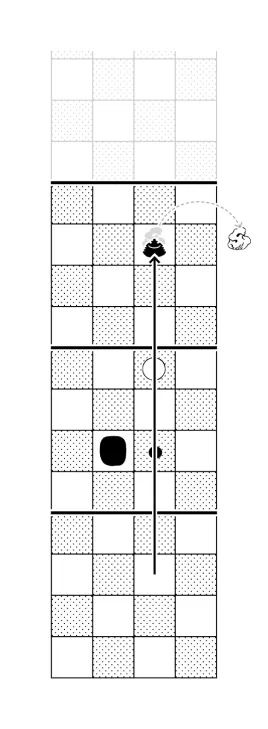
Aspect: Glare
The Lantern emits light. When it aligns with the opponent's Self (orthogonally or diagonally) unobstructed by a Guard, Cloak or your own Self, the opponent's Jutsu is fended. This can be declared at any point on your own turn when the position allows, and does not constitute a move for the purposes of move-count. However, using glare ends your turn.
The opponent affected by glare may not immediately replace the Jutsu on their next turn.
Glare conditions while the opponent's Jutsu is in reserve may prevent its placement until glare is broken. You may also be invoke glare to prevent a Dagger Throw.
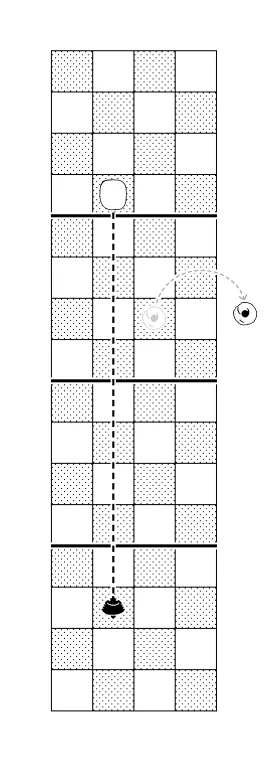
The Lantern's movements resemble a swinging pendulum. While it is inside the Self's measure, as a side-effect of its limitations, it cannot move in the same direction twice, as if swinging to and fro. Only able to go two or three squares at a time, it moves as if carrying momentum and thus unable make short, precise adjustments. You could also imagine that it needs that same momentum to take another piece without simply bouncing off). In a cluttered measure, its movements become severely entangled and restricted.
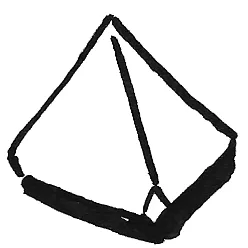
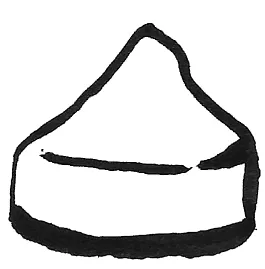

Jutsu
This piece moves one or two squares (leaping) in any direction or blinks to the corresponding square in any measure.
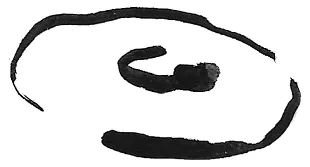
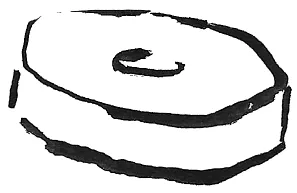
Below: examples of the Jutsu's movement

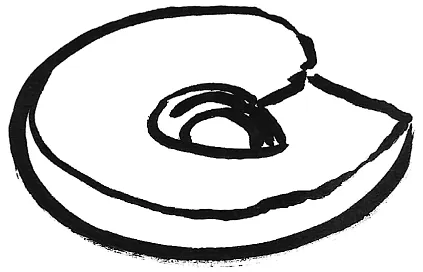
Taking: The Jutsu fends all your opponent's fendable pieces and takes the Guard (subverted) as well as the opponent's Jutsu and itself simultaneously in negation.
Vulnerability: The Jutsu is fended by any piece and taken by the Balance (transcended), by the Jutsu (negated), or via an opposing blade fending the Balance (shadow-stabbing).
Aspect: Presence
Your Jutsu's presence in the same measure as your Self piece prevents your opponent from placing any pieces from reserve into that measure.
This can be invoked in the moment in order to call piece placement untenable, but cannot be remembered and invoked at a later time to dispute the previous piece placement.
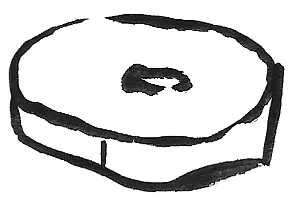
When your Jutsu occupies the same measure or diagonal as a piece you wish to target, and your Sword (or blade) sees the targeted piece, (either directly or by double-move) you can declare an intention of a specified attack on that target piece in advance. When you make the move on the next turn, you enact the intention to take (or fend) that piece without moving into its square (an attack sometimes called a “strike” in chess variants) …unless your opponent moves the target piece or removes your Jutsu from the board on their intervening move. When an intention is enacted, the Jutsu is put into reserve.
Declaring intention ends your turn.
Enacting intention is a move and requires the use of a turn (unlike declaring), but may be done along with a move in concert by the Self and/or a double-move by the Sword to position for the enactment (see final bullet point below).
Intention allows a blade to take or fend a piece one step beyond its normal constraints when it is adjacent to its target. The attacking blade otherwise cannot enact an intention outside its range constraint.
However, you may bluff an intention of any describable move, even if it is untenable, perhaps in order to draw a desired reaction from your opponent.
You cannot meta-move and declare intention on the same turn.
- You can declare intention on the same turn as moving the Jutsu into the necessary position.
- Declaring intention and passing with no move made on the board counts as a pass (for the purposes of passing rules).
- An intention can only be enacted on the immediately following turn, but declaring an intention does not preclude the possibility of changing your mind and simply taking the target piece by a normal move on that turn or a later turn.
- If you disregard your prior intention by making any other move, the intention is forfeit and must be re-declared in order to enact it.
- If you delay declaring intention or didn't think it through before making a move, your opponent can cut you off and make their move before you declare intention.
- For over-the-board play, you must start declaring intention while holding the piece with which you're making the last move of your turn. Somewhere between picking up the piece and before letting go of it, you begin to say “Intention…” and then describe the intended move (of course not necessarily with the piece you just moved, which needn't be related. If you're using time controls, you would hit the clock after finishing that declaration.
- A move identified by declaring intention can be the second part of a double-move, such as a move in concert with the Self.
- If the Sword would use an engagement double-move in order to reach the attacked piece in the movement declared by intention, when enacted, the engagement is removed and the Sword moves to that space before taking the target piece by strike.
Below: An example where Jutsu (in either position) and Sword declare and enact intention.
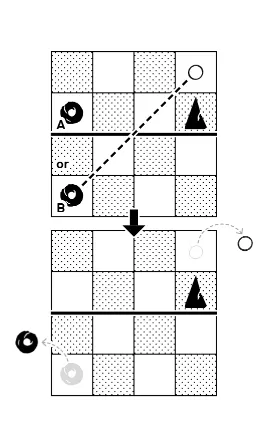
This is like a feint in fencing. You telegraph intention of a valid threat. If the opponent doesn't defend against it, or can't, you can follow through with a quick cut and otherwise pretty much maintain your blade position, controlling a line. If they do defend or evade but also open a vulnerability or ignore a threat you have planned, you can abandon your stated intention and make an even deadlier attack.
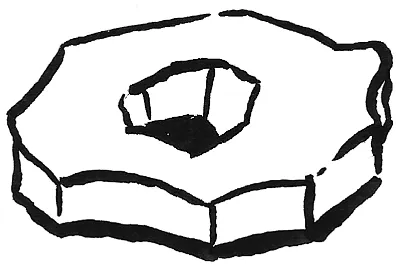
OPTIONAL PIECE:

Ruin/Rien
The Ruin or Rien is an inert blocking piece which has three defining characteristics:
- Moves pathlessly to any open square within the Self's measure or one measure outside but cannot move within the opponent's Self measure.
- Cannot take or fend any piece.
- Cannot be taken or fended.
Aspect: Floating Ruin
The Ruin can be placed from reserve anywhere in its movement range, ignoring the constraint of the piece-placement area.
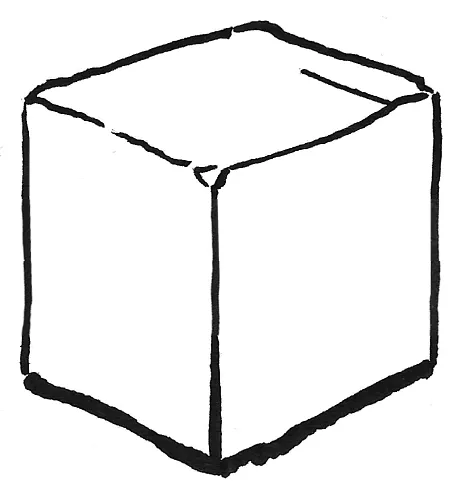
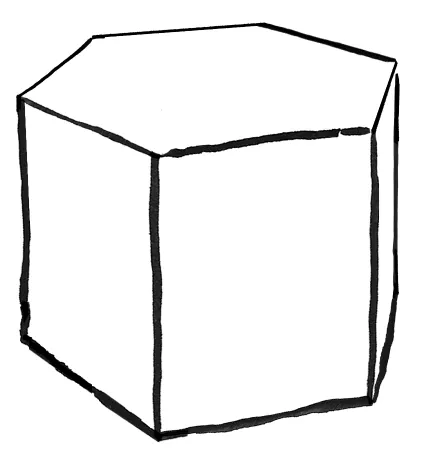
Using the Ruin in a game has two specific effects. Most obviously, it offers quick, solidly blocking defense against straight-line direct attacks. However, it may ultimately prove useless against more complex attacks, while also expending turns in order to place and reposition the piece.
Aside from these calculations, in general it adds another element of complexity to the shape of the fight at the center of the board.
Note that the Ruin doesn't quite fit into any category of piece-type. It's most like a technical piece, but its inert role among other pieces disqualifies it from most everything of what the rules have to say about technical pieces.
About Nothing
The origin of this piece's name, or names, is another bit of artificial etymology like that of the Balance/Shadow. The piece was first conceived as representing shifting forces of orbit and repulsion involved in a sword fight—intangible yet gravitational, undeniable—which dictate what path you can or can't take at any given moment. These are abstract objects and mechanisms, not “real” ones, focal points in time and space created by the interaction between two consciousnesses. “Rien” is an unrelated French word from fencing terminology, meaning simply “nothing” (as in “nothing done”). As a null element on the board representing forces in empty space, this piece has qualities of nothing yet also qualities of real, obstructive physicality. Figuratively, it is like a tree or column, some obstacle of strategic cover found by maneuvering through a real environment. Quite the opposite of “nothing.” Language can be funny; Imagine a borrowed word that isn't understood (see: rukh/rook), misheard or reinterpreted, re-justified via malapropism. “Ruin” ...kind of sounds like rien? Ruins of things like walls and columns. Empires fall and turn to rubble; solid structure becomes nothing. Trees grow up between the rocks. Sword, destroyed by sword, rusts away.
Placing Pieces from Reserve
Your pieces in reserve can be placed on the board as a turn. Pieces that have been taken / lost to discard cannot be placed, and you can never place a piece as one part of a double-move.
Pieces can be placed only on empty squares adjacent to the Self, and range constraints still apply.
Note that the special aspect of the Jutsu prevents piece placement in a measure, and similarly the aspect of the Balance presence in a measure prevents the Jutsu specifically from entering or being placed there.
Placing a Lantern or Jutsu may allow you to use Glare or declare an Intention. These wouldn't be double-moves, per se, because you've only actually moved one piece (see Double-Moves).
Below: Black's piece-placement area is within the dashed line, on any empty square adjacent to the Self.
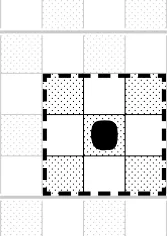
Withdrawing Pieces
Players may withdraw their own pieces into reserve only from their own side of the board, excluding of course the Self piece and the Sword, as well as the Dagger if it is one's only remaining blade (unless you want to resign dramatically).
Below: Black may not withdraw the Lantern, which is on the opposing side of the board, but they can withdraw the Guard..
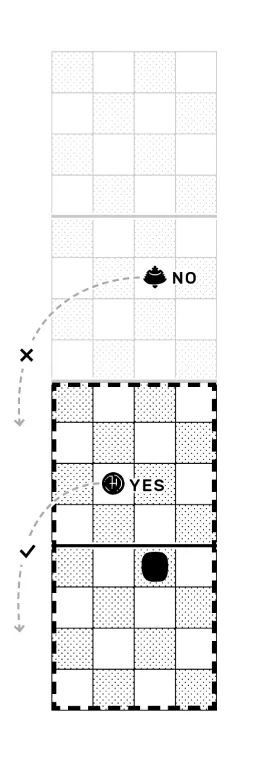
Disarm
The Sword takes opposing armaments via disarm conditions. If the Sword has been lost, the Dagger is used to execute disarmament. Disarm conditions exist when either…
A. The disarmed piece is overextended in a measure outside its range constraints.
- If this can be done instead of simply calling out the opponent's untenable move outside constraints, that is of course competetively preferable. In a more friendly game, maybe not so. It depends how much you want to punish mistakes.
B. The disarmed piece is disadvantaged under attack from a blade and direct attack from a technical piece simultaneously:
- For example, if your opponent's Sword occupies a square within the paths of both your Balance and Sword at once, you may disarm their Sword with an attack by your Sword.
- The attacking blade makes the move to take the disadvantaged armament. The other piece involved in the attack stays put. However...
- A technical piece supporting for disadvantage in a disarming attack cannot do so via speculative double-move (by engagement or any other means); it must directly “see” the disarmed piece. The attacking blade which performs the disarm may do so by double-move.
- This means the players must be alert to all threats, even those of lesser pieces to which the Sword is ordinarily invulnerable.
- The Balance's aspect of “Control” may be invoked to prevent a disarmament which would rely on the Jutsu attacking into a controlled measure.
- Ending the device Hirakamae provides an opportunity to move two pieces unrelated by the typical double-move mechanics, which could make for sudden disarming attacks.
Below: White's Sword is both overextended and triply disadvantaged (though just one of these would suffice for a disarm). Black's Sword can use the engagement's stepping-stone facilitation to double-move and disarm for checkmate.

Your attacking blade should, of course, stay within range constraints while performing the disarm. Failure to observe this could result in simply having the move called untenable and reverted, losing the piece by penalty, or even the opponent opting to disarm you in return. It is important to understand the concepts of “playing with sand” and untenable moves in order to navigate these ambiguities.
If the disarmed player has no blade left on the board, disarmament constitutes checkmate with no possibility of double-checkmate in return.
Double-Moves
Each player can only make a maximum of one or two moves total in a turn. A double-move can be made via only one of the many methods of double-move, even if the conditions for more than one method are available.
At this experimental stage, it may help to exhaustively enumerate these methods and define our terms to prevent loopholes for triple, x-tuple, or infinite chains of moves. You can reference this section if there is ever any ambiguity in that regard.

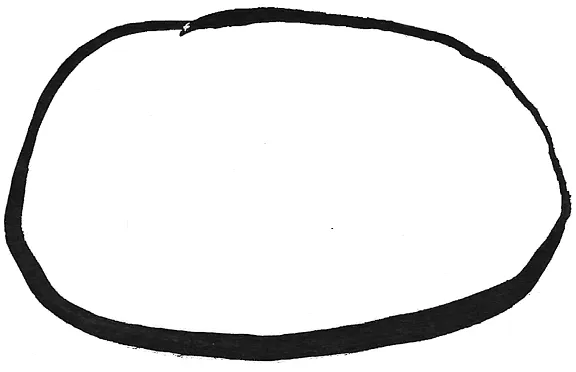
A move occurs when one of your own pieces enters a square or leaves a square, or does both in one movement, takes or fends a piece, or uses a special action on another piece. A “move” is more precisely defined as any discrete action originating from one of your pieces in a square on the board in relation to another piece or square. Examples:
- Moving to an empty square is a move.
- Placing a piece from reserve is a move.
- Withdrawing a piece is a move.
- Taking or fending an opponent's piece is a move.
- Stepping-stone onto one of your own engagements (without take the extra move it allows) is a move.
- Enacting a previously declared intention is a move.
- The device Shadow-Stabbing is a move (not a double-move; the blade is your one piece that moves to perform shadow-stabbing, even though two pieces are taken).
- The cast-piece devices are each a single move. For the cast Cloak, Obscurant Chaos, the resulting rearrangement-moves disregard these rules because they consist of special repositioning irrespective of the pieces' normal movements; it's all one move, but incidentally it can never be linked to further moves on one turn.
- Similarly, the piece repositioning offered by the distraction effect of the Dagger Throw doesn't count as additional moves, because the pieces are repositioned irrespective of their normal movements. Thus, if you double-move to make a Dagger throw and roll a short-success, repositioning with the distraction effect is allowed before ending your turn.
- Glare is the exception to the above definition of a move; it is thought of as instantaneous, allowing revealed-glare attacks.
A “double-move” refers to both or the second move in a turn where a player makes two moves. Double-moves must be linked by the preconditions of an allowed type of double-move. Examples:
- Using the engagement's facilitation as a stepping stone for a second move by the same piece is a double-move.
- Stepping-stone onto your own engagement and then using a special move now available to the same piece (like Dagger Throw, Cavazione, Opposition, or Blade Capture) is a double-move.
- Moving an armament in concert with the Self is a double-move.
- Moving an armament in concert with the Self after the Self step-stones onto a square occupied by one of your engagements is a double-move (assuming the Self only moves once).
- The special ability Shift is a double-move (it moves two of your own pieces).
- The special ability Feign is a double-move (it moves two of your own pieces).
- Use of the Fire Dance cast-square is a double-move (grants another move to a piece that has landed on it).
- Ending Hirakamae offers a double-move, consisting of two moves by one piece, or one move each by any two different pieces.
Not a double-move:
- Movement or withdrawal of a piece to reveal and invoke Glare is not technically a double-move, because Glare does not constitute a move, but it is allowed and does of course end your turn.
Note that you can never use a special ability involving two of your own pieces as the second move in a double-move, because the special ability isn't one move; it's a double-move.
Your own engagements removed from the board for double-moves do not add to the move count, just as the opponent's pieces taken do not count.
Put more loosely in entirely different terms: To perform a double-move, you may physically touch-move square-to-square either one piece twice or no more than two of your own pieces once each on your own turn (not counting removed engagements).
Immaterial Actions
Meta-moves do not actually count as “moves” (the piece does not yet occupy real space on the board), and neither does declaring intention (because no move is made until enacted). Similarly, the special ability Glare does not count as a move, because it isn't always necessary to move a piece in order to use it (it consists of light and is theoretically instantaneous). In fact, making only a meta-move, only declaring intention, or only glare technically each amount to a pass, because you've made no square-to-square move with any of your own pieces.
To reiterate and gather here some relevant rules:
- Declaring intention ends your turn.
- Conversely, a meta-move must be made before the normal moves of your turn.
- Using the special ability Glare ends your turn.
- You cannot meta-move and declare intention on the same turn.
- Declaring intention and making a meta-move do not count toward the double-move count.
- Declare-intention-and-pass counts as a pass
- Meta-move-and-pass counts as a pass
- Glare-and-pass (with no move preceding glare) counts as a pass.
So, a really complex turn could conceivably go as follows: Meta- move the free engagement; Self lunges forward; Lantern flails forward to take Cloak, revealing Glare to fend the Jutsu. (Would be notated like: aw SY7 LtZ8 LfJ~)
To indicate that you're finished making a chain of special and optional meta-moves, etc., you may wish to say “your move” or “…and to you,” or “à toi” if you're fancy, although the use of a turn-counter obviates the need for this. (See also: Passing and Custom Rules & Extra)
A Note on Form
Double-moves should be made without pause, after having fully thought them through. Or, you can begin to move a piece and hold onto it while thinking through the next move (as if observing the touch-move rule in chess) and make the additional move with the same hand (see Concert of Self). Observing good form here prevents moments where you might suddenly decide you want to make a double-move at the same moment your opponent reaches to make their own move, assuming your turn had ended. Of course, in a friendly game, this matters much less, and furthermore it is never really against the rules to go ahead and make a double-move that you previously declined unless you explicitly stated that your turn was finished.
Passing
A player may choose to pass a turn, but if the opponent then also passes, the first player who passed must now make a move on the board. In other words, a maximum two passes can occur consecutively.
This effectively means you can pass unless the other player denies it. When your opponent passes, you have to decide whether it's worth more to you to A) accept their pass and make an extra move in tempo ahead of them, or B) reject the pass and force them to move, perhaps even zugzwang (when they would prefer not to move). You can imagine it as if one fencer has stood still, but the other makes an instigating movement toward them and forces a reaction.
The three immaterial actions (meta-move, intention, and glare) will not suffice to respond to this forced move.
Note that colloquially saying “…and pass” after making a move with the Self or otherwise declining to make a double-move (e.g. upon stepping stone by engagement) is distinct from actually passing a turn, and may be misinterpreted. It is preferable to instead say “your move” or “…and to you.”
Is any of this necessary?
There are usually plenty of pieces with which you can make a “waiting move,” or pieces to be placed from reserve, or meta-moves which are all comparable to a pass. Chess, likewise, already allows forms of crypto-passing in most of the early to middle game anyway, what with waiting moves and repetition. Nevertheless, for the sake of adding another sandbox item, here is real passing. It is still important to avoid the stalemate eventualities of extended pass-repetition and any other potentially bugged situations arising from badly defined rules. The implications and intersections of double-moves, passing, and immaterial moves have all made it very difficult to discuss any of this succinctly. Time will tell.
Devices of Art & Mysticism
The devices consist of a handful of special moves created by interactions between two or more pieces with an effect on a separate piece or on the rules of the game itself.

Shadow-Stabbing: When your opponent's Balance is on your side of the board, fending it with a blade takes the Jutsu regardless of whether it is on the board or in reserve. The Balance, fended, goes into the opponent's reserve. This is a common part of the mechanics of fighting pieces, but since it involves more than just one piece taking another, it belongs in the category of devices and neatly exemplifies them.
Hirakamae Stance: This position consists of one's only blade piece beside the Self in a step, or both blades on either side of the Self, in an otherwise empty measure. The player can pass indefinitely without risking a draw and the adversary may not pass–they must continue making moves between these passes or resign. A move made by the enstanced player ends hirakamae and may be a double-move made with any one or two unrelated pieces (one move by each piece), after which normal play resumes. Hirakamae may only be used once per game.
…unsure if this would be most appropriately called “hirakamae stance,” “hira no kamae” or “Hira ichimonji no kamae.” As seen in a duel scene in the excellent anti-samurai film ‘Seppuku’ (切腹, released in English as ‘Harakiri’ — dir. Kobayashi Masaki, 1962)

Death Spell: In a formal game, if the player checkmated by touch immediately follows not with double-checkmate but rather with the negation of Jutsu-takes-Jutsu, they still lose, but the ceremonial prize is upended: the losing player takes the winning player's token.
Cast Piece: Into a rare empty measure between the two players' Self pieces, excluding the allowed presence of the free engagement, one may throw their own Lantern, Cloak, or Dagger piece to initiate an effect. This move is made irrespective of normal movement or range constraints and is performed by literally tossing the piece down onto the board (a short distance, like the roll of a die). The piece may be used for this casting by picking it up off the board or from reserve, but never from discard. Casting Lantern or Dagger in concert with a Self move is allowed.
If it is unclear which square the piece landed within or leans most toward, the caster's opponent adjusts it to a square that it touches. If the piece falls outside the empty measure, it is lost with no effect. (In the case of a piece landing dubiously on the outside edge of a measure, an impartial arbiter or coin-flip may be needed to determine whether it's in or out.)
In the square where the cast piece landed, the players notate or commit to memory a cast-square which can be recalled for use later in the game. The cast piece is then discarded.
Unless the empty measure becomes occupied by a caster's piece(s) on their turn (as is possible via the immediate effects of a cast Cloak), the opponent, on the following turn, may still use the empty measure to cast their own piece. For example, if one player casts their Lantern, it is not uncommon that the other would likewise cast theirs to match.
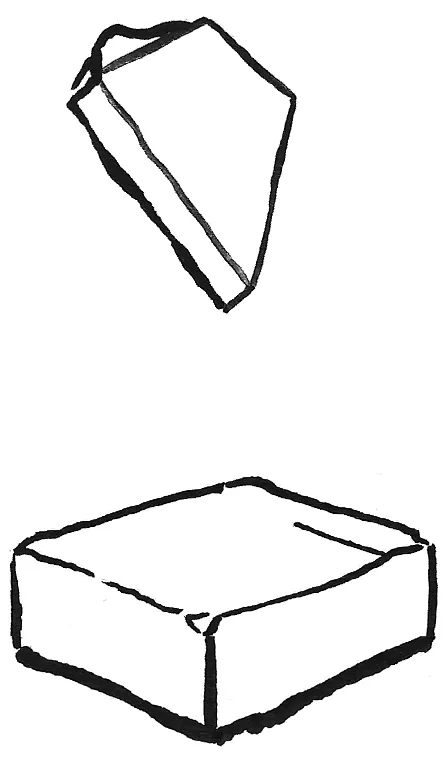
The cast-piece devices are as follows:
Cast Lantern – Fire Dance: Any one of the caster's pieces which enter the cast-square may make a double-move from that space as if by stepping stone, even in conjunction with taking an opponent's piece on that square. The square may be visibly marked with a flat tile or small token, if you wish. Use of the cast-square is voluntary and unlimited.
Cast Cloak – Obscurant Chaos: Immediately upon casting, the caster is allowed to completely reposition their Self piece and one blade anywhere on their side of the board and behind the step the cast Cloak landed in, otherwise irrespective of movement and range constraints—but without taking pieces. On future turns, any one of the opponent's technical pieces which enter the cast-square can be immediately lost to discard if the caster invokes it (including if the opponent has just taken a piece or placed their own piece on that square, or even interrupting a double-move in process) at which time the caster may once again completely reposition their Self and a blade piece on their side of the board, behind the cast square, but this time able to take pieces via the repositioning. However, this rearrangement of criticals counts as the caster's turn; it might be performed only with the Self or opted out of entirely to instead make a normal move or double-move, respectively. The square can remain unmarked for the added drama of a trap. Invoking the square is voluntary, and can be withheld for as long as the caster wishes. After one use, the cast-square is spent and cannot be used again.
Cast Dagger – Shima: All reserved pieces except Daggers and engagements are discarded, and the players continue with what is already on the board. Additionally, retreat and reset are now impossible, and drawing the game is not an option; an attempt to draw by agreement or pass repetition is now equivalent to both players losing. The cast-square has no effects, but if the caster later enters the cast-square with the Self, they may reclaim their Dagger and place it on the board immediately. This does not end Shima; Shima is irreversible.
Setting Up & Beginning a Game
1. The first thing two players must do is agree on the terms of the game:
- Are you playing a casual game or a formal game, with tokens?
- How many retreats will be allowed?
- Which setup process will you use? (see further below)
- Will you play a friendly game allowing both players or a less experienced player to revise a move? Will the touch-move rule* apply? Likewise, what will happen if someone attempts to make an untenable move?
- Will you be using the full standard set of pieces, removing any of them, or adding custom pieces?
- Will you play using the more obscure devices?
- How will you roll for an attack with the “Dagger Throw” special move? (This is likely determined by whatever is available in the set.)
* The “touch-move” rule in chess is an enforcement of good form which says the following: A player who has touched a piece on the board—intentionally, on their turn, i.e. as a result of considering their potential moves—must then move that piece (if the piece is theirs) or take it (if the piece is their opponent's) if it is legal for them to do so.
2. Next, depending on the set of pieces and personal preference, players may choose a token to use as the free engagement. If playing a formal game with a unique Self, a.k.a. “playing for keeps,” each player will also provide a token to play as their Self piece.
To avoid confusion and blundering, some consideration may be necessary to keep the board visually readable. For example:
- The player using the black pieces shouldn't pick a white Self, and vice versa.
- Neither Self token should closely resemble the key distinguishing qualities of any other piece in the set without its own superiorly-distinguishing qualities.
- The free engagement shouldn't more closely resemble one side or another, or one token or another. (It helps to use one that is neutral gray or notably different in color, perhaps transparent, refractive or reflective.)
Below: Default starting position

3. Set up the board. Each player starts a standard game with the Self, Sword, Cloak and Balance, plus their four engagements. The rest of your pieces begin the game in reserve. Setup of the board is done using any one of several styles:
- Standard baseline setup: Both players start with their criticals and technicals in the standard layout on their fourth step out and engagements in a row on their fifth step out.
- Sittuyin-style concealed variable setup: Players may choose a custom stance consisting of the above pieces arranged within the following constraints: starting criticals and technicals in any order on their baseline row (step 4 or 13) and engagements on any step within your second measure, one per line. This is done without revealing your position to your opponent, either with a partition across the board during setup or by first marking the position of your pieces on a gridded paper or card and revealing it at the board simultaneously before setting up.
- Setup in turns: One player is determined to place first, and places one piece on their side within the above constraints. The other player then places one, and the two alternate in turns until setup of the starting pieces is complete.
Place reserve pieces at the edge of the board, to the right or left, on your own side. Keep your piece container/s or a shallow dish ready for any pieces that will be discarded during the game. Ready your time control, if necessary.
4. Determine who goes first. This is decided in one of three ways: by advantage, by random drawing, or by initiative.
- Advantage: If one player is known to have more experience or skill than the other, they might simply allow the newer player to go first.
- Random drawing: In a game set up on the standard baselines, the two players may decide who goes first by chance. A common method of determining this comes from chess. One player holds the free engagement in a closed hand with both hands behind their back or under the table, then offers their closed hands to the other player, who guesses which hand contains the piece. If they guess right, they go first.
- Initiative: For a game set up in turns or Sittuyin-style, the player who has placed the most pawns closest to the center line has shown more aggressive initiative, and thus goes first. This is counted by adding up three points for each pawn at the furthest step (eighth step), two points for each pawn at the step behind that, one for each pawn behind that, and zero for any pawns on the engagement baseline. The player with the higher score goes first. If the scores are equal, the player with a pawn closest to the center point goes first. If this too is equal, then you must decide by random drawing.
Now you may begin. The player determined to go first may make any allowed move, or even pass!
The variability of setup reflects the asymmetrical shape of fencing, where different fencers will encounter each other with different heights, reach, handedness, strengths, endurances, secrets, levels of training, styles, etc. Note also that the starting setup, both standard and preferential, may change dramatically as the rules and mechanics of the game develop and reveal themselves over time.
Impasse & Other Edge Cases
Some of this game's inversions and ignoring of strict chess conventionalities can result in rare but frustrating situations which are nevertheless quite possible in real fencing. Here, they mostly result in draws, resets, or disregarding the circumstances:

Impasse — Quibbling over the free engagement: If the free engagement is pushed back and forth at length and returned to its starting point by repetition twice consecutively, either player can declare a reset of the entire board on their own turn unless/until a move is made by a piece other than the free engagement before that declaration. The other player's turn follows.
Impasse — Non-fencing: If the players confuse or disinterest themselves with too many passes, repetitions of the free engagement, too many untenable moves, Ruin moves, or making repetitious moves without taking or fending any pieces for many turns, they are simply not fencing, and the game may be called a draw. Another likely scenario is the possibility of accidentally mismatched board states during a correspondence game (due to error or misunderstanding of the rules/notation).
Disarm from death: (Also known as “fencing with a sword in your heart.”) If a touch-checkmated player is able to disarm in return on the next move (on the space formerly occupied by their own Self piece), it is not a double-checkmate, and the disarmed player still wins with checkmate by touch.
The Self cannot move after checkmate. In the rare event that a player checkmated by Sword-takes-Self may wish to double-checkmate in return using their Dagger (which may be blocked by their own Self and/or has a potentially shorter range than the Sword), concert may not be used to facilitate the double-checkmate. This is because in a checkmate by touch, the blade takes the Self, and the taken Self is dead on the spot—it cannot move from the position where it was taken.
The fact that you can double-checkmate in return but may not immediately see the possibility means that when a checkmate by touch occurs, the board should not be cleared right away. Although the winner may declare victory and leave the table, a victory is not official until the loser either acknowledges it or leaves the board. Should the winner be able to logically demonstrate that the game is definitely over, this would also suffice. In the absence of such a definitive analysis, however, if the checkmated player refuses to admit defeat, they are welcome to continue to assess the board until they notice their opportunity for double checkmate; and, if they take it, both players lose. If time control is in use, checkmate by touch results in an immediate reduction of the checkmated player's clock to a few seconds, so that they must find the move in time before death.

Notes on Directionality & Abstraction:
Playing this game on a two-dimensional grid requires us to utilize certain common-sense notions of “direction”, but these directions and distances don't always line up with 1:1 correspondence to the sword fight we want to imagine.
In our game, contrary to something like an RPG, the grid is not a floor-plan mapping out literal steps of hard distance between fencers and arms. Rather, the grid and its pieces comprise a more easily graspable, abstracted represation of the continuously shifting mechanical interplay existing between the two opponents.
Case in point: When the two Self pieces go so far as to pass one another on the board, this is not to represent two fencers passing and trading sides; rather, it is a situation where the fencers have moved in to extreme close-range, enmeshed in one another's influence and geometry. Notably, the players themselves remain on either side of the board and there remain fixed definitions of “your side” and “their side” for certain rules of the game.
Endings
- Checkmate by touch
- Checkmate by disarm
- Double-checkmate by touch
- Checkmate by self-disarm (via missed roll on the “Dagger Throw” attack)
- Resignation (by yielding, abandonment, or by exceeding the retreat limit)
- Draw by agreement
- Draw by no contest (impasse/non-fencing)
Using the device of a “Death Spell” could be considered an eighth type of ending, but it is basically a checkmate by touch or disarm.
Untenable Moves
“Untenable” refers to a move which breaks a rule, most likely one regarding range constraints and double-move combinations. This is the same concept as an “illegal” move in chess, but legality is not the paradigm here.
Preempting all of the below, it must be understood that a player may prefer to disarm their opponent, if possible, instead of calling the move untenable (an overextended armament piece is often the result of an untenable move).
Note: When it comes to range-constraint, a move is considered “untenable” and open to call when the range-breaking move is made by the constrained piece, not by the Self. I.e., if the Self piece moves and leaves behind an armament outside of range constraints, that's not an untenable move (but it does of course leave the piece vulnerable to disarm).
An untenable move can be called out by the opponent or graciously by the player who made it, but only immediately after the move is made. At this point, one of several things happens depending on prior agreement:
- In a friendly game: The move is reset, and the player can make an allowed move.
- Time Penalty: The move is reset, and the player receives a penalty reduction to their time control, or the opponent receives a bonus.
- Turn Penalty: The move is reset, and the player's turn is skipped.
-
Piece Penalty: The piece which made the untenable move is discarded, and the player's turn is skipped.
- Absolute piece penalty: If the offending piece is the Self or their only blade, the player has lost the game.
- Lenient piece penalty: Offending pieces are discarded unless the loss would result in checkmate, at which time the piece is moved back and the player merely has their turn skipped.
- Sudden Death: The player who made the untenable move loses instantly.
- Delayed Reset: In a serious match, if the impossibility of a move is significant, known with certainty, and only realized several moves later in the game, and the opponents are not adhering to strict sudden death for such moves and/or can't remember the exact sequence of moves to reset the board back into its last possible position, the non-offending player may declare a reset of the board as if by retreat, whether or not retreats are available.
Time, Turn, Piece, and Sudden Death penalty must be called for immediately following the untenable move. If you make a move, you've lost your chance to call out the preceding untenable move. However, if a later move with the same piece reinforces, reiterates, or otherwise fails to correct their previous untenable move with that piece, you have another chance to call out the renewed untenable move.
Note that it is not the position that is untenable, per se, as it would sometimes be termed in conventional chess, because you can't call out an untenable position that an opponent has merely failed to correct by moving an unrelated piece. They have to make an untenable move again.
Lenient Piece-Penalty or Turn Penalty are the two most preferable methods for semi-serious challenge games, because they encourage exciting positions and less trepidation over playing “right” while allowing more knowledgeable players to take advantage of an opponent's bad form. (For more on this norm, see “Playing with Sand” in the Overview section.)
Custom Rules & Extra
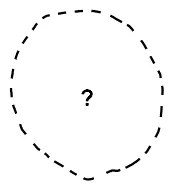
Fairy Pieces: New reserve pieces with unique special moves can be added for experimentation and development of your own versions of the game. Gauntlet, Caltrop, Jitte, Gunblade, Falcon, Sand, Spear, Tassel—Welcome to the endless, historically self-defeating and all-devouring hell of weapons development.
In essence an additional player, The Donkey is placed without restriction and has the same [non]interaction mechanics as a Ruin, but no piece can leap over it, and it cannot be withdrawn. After being placed, it moves autonomously/semi-randomly on its own turn following the turn of the player who placed it.
Donkey movement process:
- When there is only one open square adjacent to the Donkey, it moves there.
- Otherwise, the player who placed the Donkey rolls for its movement using the stick-dice. The number of black sticks thrown (1-5) corresponds to a movement forward-left(1), forward(2), forward-right(3), backward-left(4), or backward-right(5), based on the perspective of the player making the roll. If no black sticks are thrown, the Donkey stays put for that turn.
- The Donkey will fend both players' engagements or the free engagement to move into a square.
- If the Donkey is to move to a square occupied by either Self, it pushes the Self away (in the direction of movement) to the adjacent space behind. If there is no open space behind the Self, the Donkey stays put.
- If the Donkey is directed to move to a space occupied by any other piece, it instead moves in the opposite direction. If that direction is also blocked, the Donkey stays put.
- Finally, if a movement directs the Donkey off the board, it is removed from play (and can be put back into play, or not, depending on prior agreement to unlimited donkeys or a one-donkey rule).
Here are a few unexplored movement mechanics to try:
-
“3D” Piece movements: The measures of the board allow us to create a piece which makes measure-based movements, like a Jutsu, except as if it were starting from the corresponding square in the destination measure. A king-move or a knight-move would work well for some interesting patterns. This is similar to “3D” chess variants with multiple boards in vertical layers.
-
Oriented rook or knight movements: A piece can be placed facing in one of the four orthogonal directions. When it moves, it moves in the direction it faces, and when it lands on a new square, it can be placed facing in a new direction.
-
Relational origin points: Rather than moving based on its own current position, a piece could be given available movements as if starting from the Self's square. Such a piece could be extrapolated into a pair of pieces that move in relation to one another's position. This could even be used as an entirely different mechanic filling the role of range constraint.
-
Modular pieces: Pieces in a cluster which can move together or individually, separating and regrouping on one or more squares.
-
Measure-movements: There are yet more ways to use measures beyond range constraint and the Lantern's flailing; e.g., one may adapt the “edgehog” chess piece or a perimeter-bound rook.
- Two-square pieces: possibly a Ruin- like board- structuring piece with special properties which occupies two adjacent squares.
Incomplete Sets & Asymmetrical Games
It is perfectly possible to play without the full set of pieces described in these rules. It is only absolutely necessary to have a Self and Sword, plus maybe a couple other pieces. However, the fewer pieces you use, the easier it is for one player to very suddenly find themselves in a losing position.
More interesting is the possibility of experimenting with asymmetrical sets of technical pieces on either side of the board. For example (with some particulars left for you to determine):
-
Archives Assassin: A swordless player with four Daggers (up to two drawn at a time) and five Ruins.
-
Aristocrat: A player with only Sword, Dagger, Balance and Cloak.
-
Ceremonial Guard: A player with a Sword, two Guards, two cloaks, two Ruins and a Lantern.
-
Illusionist: A player with no Sword but with checkmate privileges granted to the Cloak, Lantern, and Jutsu.
Extra game piece: Turn Counter
Optionally, you may wish to hand a token back and forth (or push it across the table) on each turn to denote whose turn it is. In a casual game without time control, this can make it easier to remember where you were at if you need you adjourn for a period of time. In a more serious game, it may help to avoid the need to state when your turn is over. Of course, time control makes a turn counter unnecessary. (Just make sure the right person has the turn counter on their side when you get up from the table, or you'll only confuse yourself more.)
Hug (by Tyler)
Using this mechanic, a draw must be settled with a “hug.” Both players pick up their Dagger and Self. With their choice hidden under the table, each conceals either the Dagger (to betray) or Self (to hug) in one hand. The results are revealed simultaneously. If both chose Self, the draw is confirmed. If one player chose Dagger, they betray the draw and win by checkmate. If both players chose Dagger, it is a double-checkmate, and both have lost.
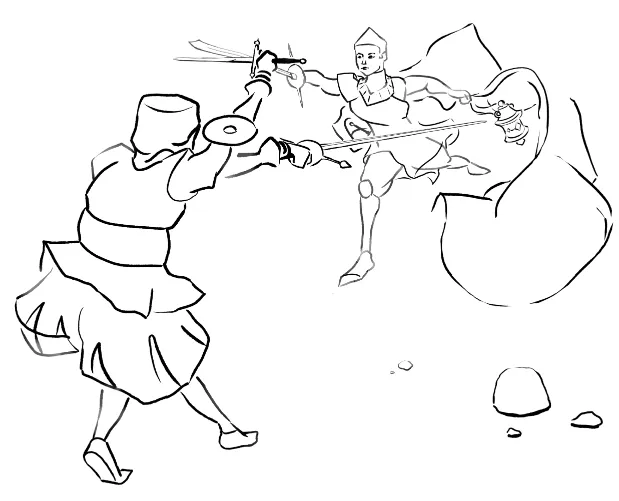
Alternate Dice for Dagger Throws
see: Dagger
Without the standard stick-dice, there are several alternate methods to roll for success on the special move “Dagger Throw”:
- Flat Odds — One-In-Six: The target player rolls a six-sided die. If any number other than a 1 is rolled, the Dagger misses and is lost. If a 1 is rolled, the Dagger hits and the move constitutes a checkmate by touch.
- Flat Odds — Eight, Ten, Twelve, or Twenty: The same as above but using the appropriate die from an RPG dice set.
- Coin Flips: This works the same as knucklebones. Flipping heads three times is the same as throwing all-black on a toss of three knucklebones.
-
Guess by Measure & Step: The attacking player turns their back to the board. The defending player places a new, unused token in a specific location, and the attacking player must guess, then look.
- For a one-in-four chance, equivalent to throwing two knucklebones, the attacking player guesses which measure the token was placed in.
- For a one-in-eight chance, equivalent to three knucklebones, the attacker guesses which measure and whether the step number is odd or even.
- For a one-in-sixteen chance, equivalent to four knucklebones, the attacker guesses the exact step number.
- For a one-in-32 chance, equivalent to five knucklebones, the attacker guesses the exact step number, plus whether it's on the X or Y half of the board's central axis.
- For a high-risk variant, equivalent to a coin toss, the attacking player guesses which side the token is on.
- Pen & Paper: The target player picks a number 1-6 (or any other odds you've agreed to before the game) and writes it on a piece of paper, concealed. The attacking player then guesses the number.
The odds on this throw are up to preference and should be agreed to before the game. You are balancing realism (lower chance) with drama (at least a not-miniscule chance, if not moderate-to-high).

Alternate Board Variant: Mystic Circle
...aka the Magic Circle or Mysterious Circle
Many schools of swordsmanship throughout the world have operated in conceptual space that breaks outside the mostly linear axis of forward-and-back footwork used as the reference for this game. One such school is the geometric tradition of Destreza, the Spanish art of fencing which formalizes its footwork into a circular pattern.
I personally don't know a thing about how this actually works, but if I can learn, I think an interesting next step for Veney would be to experiment with a completely different board using a circular grid, perhaps similar to certain three-way chess variants.
Below: Gerard Thibault's circle diagram with footwork visible
Time Control
Time and tempo are important to fencing and chess alike. Tempo is a concept in chess games having to do with who has the initiative: whose turn it is, what threats and captures are active in the position, and by extrapolation what further threats they imply. In fencing, tempo, or time is both a fact of reality as well as a manipulable, compressing and extending dimension that exists between two people and the acceleratingly precise movements of their blades. In chess, tempo works similarly, but measurement of real time is optional. Two opponents can play across the board at a casual pace, or they may wish to simulate the speed and urgency of real combat with a clock. The introduction of time controls is our traditional way of doing that:
Chess Clock: This is a device with settings that can be programmed to give each player a certain amount of time in which to make moves. While it is their turn, their time decreases until they make a move and hit the switch. If one player runs out of time, they lose. There are various common time controls variously applicable to sabre chess. Something like a five second time limit which resets on each turn might be quite fencing-like.
Hourglass: You could achieve an accelerating effect using an hourglass. Each time the hourglass is flipped, whatever sand remains is how much time you have for your turn. This is malleable, seesawing exchange, like tempo in fencing: if your opponent uses almost all their time, you will get exactly as much time as they used. And if they use barely any of their time, you will get only that much, and the tempo accelerates for a moment. If you successfully make a move without running out of time, you have survived but given your opponent back almost a full glass of time. Having lost time, you must regain it by quickly making moves that require your opponent to act carefully.
Other: Early in the conceptualization of this project, before chess became the model, many other vague time-based mechanisms were considered. Spinning tops falling down, stacked card-castles of increasing precarity, a ball bouncing to a stop, jacks or knucklebones picked up, things thrown and caught, even a rhyme sung in turns—These are all time. There are many possibilities that could end up changing the game into something else entirely.
Remember that tempo already exists as a concept in all chess-like games. It is not necessary to reinsert artificial time into a game which already uses its pieces—occupying time's twin, space—to simulate tempo via an abstraction.
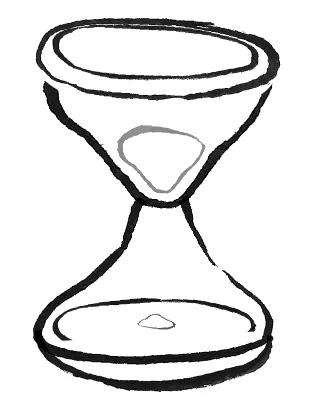
Additional Terminology
These terms may or may not be used for precision of description or according to stylistic preference:
Pieces
Blade: either the Sword piece or the Dagger piece
Shadow: another name for the Balance
Ward: another name for the Guard
Runestone, Waystone: other names for the Ruin/Rien
Fighting pieces: all the pieces other than the Self and Rien/Ruin
Lunge: a three-square lunge by the Self, or any lunge generally
Raddoppio, Balestra, or Patinando: a four-square lunge by the Self, always from the first measure
Threat: When a blade can reach an opposing Self piece in one move (essentially check or checkmate in one, but it isn't called so; i.e. threatening mate)
Touché, Touch, Mate, māta: Checkmate by blade-on-self
Due to the artificial limitation of only one piece being able to move in concert with the Self at a time…
Offensive Maneuvering: Moving a blade in concert with the Self can be understood as an offensive maneuver.
Defensive Maneuvering: Moving the Guard in concert with the Self can be understood as a defensive maneuver.
Counter-offensive Maneuvering: Moving an armament in concert with the Self in such a way that both defends against an opponent's threat while creating a threat of your own.
Space & Orientation
Adjacent: refers to the position of two pieces in squares that touch either orthogonally (sharing a side) or diagonally (sharing a corner).
Arm's Reach: The area of the two measures occupied by the Self and one further.
Ahead/Behind, Forward/Back, Further/To the rear: Such words are used from one player's perspective to describe piece relation, steps or measures which are closer to their opponent (ahead, forward, further) or closer to their first measure (behind, back, to the rear).
Inside/Outside: From one player's perspective, either lateral side of the board (the W and Z lines) depending on where the Self started. The side close to the Self is the outside (where you have fewer other pieces to use, and, in real fencing, less arm mobility), and the side further from the Self is the inside (where you have more pieces other than the self and more arm mobility).
W-ward, Z-ward: Irrespective of either player's point of view, W-ward means toward the W side of the board and Z-ward means toward the Z side of the board.
Up-step, Down-step: Irrespective of either player's point of view, up-step means toward higher step numbers (up to step 16) and down-step means toward lower step numbers (down to step 1).
Left, Right: Non-fencing words that depend on one point of view and probably shouldn't be used.
Parry & Riposte: To defend against an opponent's attack and return immediately with an attack of your own, facilitated by the movements of your defense.
Engagement Measure/s: Your second measure, or your opponent's second measure, or both, wherein the engagements begin the game.
Game States
Grappling: A position where the opposing Self pieces are close enough that drawing a Dagger presents an immediate threat; placed pieces may block opposing piece placements; and/or re-placed engagements function differently, having strayed from their more systematic patterns within the engagement measure, etc.

This is trivial, but the Guard is not called a “Shield,” for a reason. It is an abstract representation of deflection, but not so much the heavy-armored blocking of something large like a shield. Think instead of the guard on a sabre hilt, or a small buckler.
It's not a wall—it's a small armament that must be maneuvered with precision in order to function properly.
Notation
To be brief, notation works generally the same as chess notation, but with these assignments and additional symbols:
S Self
$ Sword
C Cloak
B Balance
G Guard
D Dagger
L Lantern
J Jutsu
e Engagement
a Free engagement (a is like an upside down e)
t take (instead of x for capture, as in chess)
f fend (coincidentally an upside-down “t”)
--- pass (implied if your only move is immaterial)
== Reset Board
* piece drop (G*Y9) or withdrawal (*G)
~ indicates a special move or device, e.g.:
- LfJ~ ...Lantern fends Jutsu by glare)
- DfBtJ~ ...Dagger fends Balance, thus taking Jutsu by device)
- CZ12~ ...Cloak moves to Z12 and performs blade capture)
- ~L ...Cast Lantern)
- ~C SW3 $X6 ...Cast Cloak with obscurant chaos moves)
- BY10~$W13 ...Shift
Cavazione, Opposition, and Deflection are notated simply with the movement your piece makes in order to perform the action, followed by the special move indicator (~). The placement of the opponent's piece is implicit and not notated.
For Obscurant Chaos, the repositioning of pieces is indicated by simple move notation after noting cast Cloak (e.g. ~C SW3 $X6)
# checkmate ($tX13#, Sword takes Self on X13, checkmate)
## double checkmate (follows checkmate)
! Declare intention of a move (Jutsu special move), e.g.:
- !$tX10 ...Intention: Sword to take Lantern on X10)
...or enact the move previously declared, taking by strike, e.g.
- $tX10!
U Untenable Move marker — would be used only with penalties, e.g.:
- SY9U# ...Sword to Y9 out of constraint, checkmate by penalty
- BX2Ut ...Bishop attemps to fend on X2 but moves off-diagonal, is lost by piece-penalty
aw Free engagement meta move left (toward W)
az Free engagement meta move right (toward Z)
a+ Free engagement meta move up-step (toward 16th step)
a- Free engagement meta move down-step (toward 1st step)
a= Free engagement reset by repetition
The free engagement moved into play is notated as a normal move (e.g. aX8), not as a piece-drop with the asterisk marker.
When it would be unclear which engagement moves to a square (i.e., if two different engagements belonging to the player are both able to fend on that destination square), the notation specifies which engagement by step or line.
For example: eYfX8 ...meaning, the engagement on the Y-line fends on X8.
Double-moves are simply written one after the other, separated by a space, e.g.:
- SX4 $tZ5 ...Self moves to X4, Sword moves in concert to take a piece on Z5
- $W7 $X8 ...Sword takes its own engagement on W7 and moves to X8
- BZ15 BfJ~ ...Balance moves to Z15, fends Jutsu by aspect
- L*Y9 LfJ~ ...Lantern placed on Y9, Lantern fends Jutsu by special move Glare
- WfC LtJ~ ...Engagement on the W line fends Cloak, revealed Lantern takes Jutsu by special move
Likewise meta-moves and intention, e.g.:
- a+ BfY9 ...Not a double-move; meta-moves the free engagement forward and Balance fends a piece on Y9
- JW7 !$tX7 ...Not a double-move; Jutsu to W7, and Intention: Sword to take Lantern on X10
Turns can be grouped into pairs by commas, semicolons, and the move count number, similar to chess. E.g.:
1. SZ5 $fW7, CtW10; 2. LtW10, SX13 $fY9; 3. az LW4, $X10; ...
The Pieces' Shapes in a Standard Set

Engagements are the simplest piece, represented by small pebbles reminiscent of the head of a pawn. They are mere points or markers, but in the aggregate they are used to map out a larger structure.


The Sword and Dagger are both best represented by a shard of something sharp and pointy, flat, like a blade. Some pointy shells might also work nicely. The Dagger is smaller than the Sword.

The Self is another simple-shaped piece. In a casual or practice game, we use a big, roundish lump of rock; It is a mass, like a body. In a formal game, unique or vibrant Self tokens represent life (and can be allowed to take on features normally reserved to other pieces, since color and surface qualities like shine will distinguish them).

The Cloak is typically asymmetrical, organic or irregularly-shaped, amorphous, perhaps with holes in it. Its shape evokes the fluidity of a cloth garment, the uniqueness of its non-linear movement on the board, and the uniquely animal shape of the knight piece in chess.

The Balance is long, its shape evoking a measure of weight, an axis, the geometry and range of a shadow, the straight, diagonal path of its movement on the board, or even the pointing tower-like shape of the bishop in chess.

The Guard is flat and round like a buckler or rondelle, two types of small shields, or like the top of a rook. It could also be a flat ovoid, or more angular flat geometric shapes.

The Lantern is a funny little pointed droplet, pyramidal, as if hung from its peak, or it can be seen as the shape of a flame. It is a comfortable, inconsequential and (deceptively) unassuming shape.

The Jutsu has a contemplative circular shape with one central eyehole or pivot, as if worked by time and erosion, spiraling, around a focus point. It is able to blink from measure to measure around the board as if moving-without-moving, constant in nature.

The Ruin/Rien is distinguished as the largest piece on the board. Its footprint more or less fills the space of a square on the board. Unlike the more rounded shape of a Self piece, it has more edges, sharp features, or a squared/blocky shape, standing like a column among the other pieces.
Tips for Gathering / Fashioning Pieces
To get yourself a set, you can use found objects: rocks, shells, bones, seeds, gems, beach glass, fragments of clay or ceramic, beads, buttons, rings and jewelry, bottle caps, corks, coins, charms and figurines, molded clay or wax, other game pieces, toys, candies, hacksilver, dried pasta, electrical components, teeth, etc.
You can also carve wood, stone, or other materials into shapes of your own design, more like a traditional chess set. I have limited experience with this, but here are some amateur techniques I found useful for working with things like rocks and shells:
- Sandpaper or emery paper can be used for flattening faces and sharpening or softening edges of small rocks, depending on the type of stone
- A file, and/or …other rock shaping tools. I don't know.
- A simple c-clamp can be used to easily and quietly crack rocks (without having to bang on them with a hammer). This method also gives you some measure of control over where the rock breaks, though it certainly isn't guaranteed to break where you want it to. You can at least make rocks smaller or give them more varied shapes.
- Mineral oil and others can be used for darkening black rocks or bringing out colors and luster.
- A rock tumbler smooths rocks. Or so I understand. I've never used one.
- Some people use like …acid and crazy chemicals for exposing fossils in rock. I do not know how this works. Please be careful.
- Bone can be whitened using simply UV rays from the Sun, or with hydrogen peroxide or other chemicals. Bleach will make bone brittle, so be careful.
- A random trick I used recently: If a crevice, hole, or some inscribed feature of a rock isn't showing up clearly enough in the rock's dark black surface, you can use black crayon wax to both darken the interior of the feature and add a bit of polished shine. This is potentially messy for your other pieces in storage if you're not careful, but it works well, and it's cheap.

If you want to get a makeshift set together quickly, you can simply use chess pieces, plus checkers and things found around the house, or even just draw identifying symbols on makeshift flat pieces of paper, wood, coins, etc.
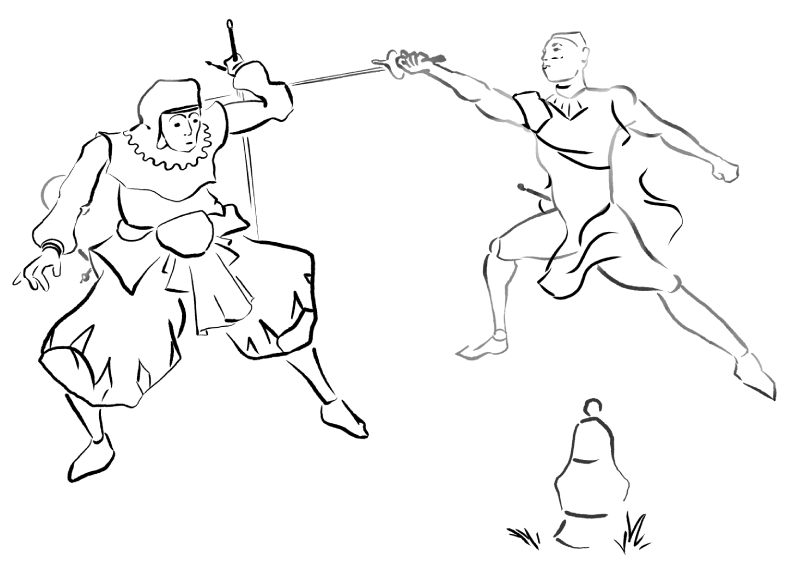
Story
In the years 2011–2013, I was fortunate to take a couple sabre fencing classes and participate in the fencing club at my school, led by an instructor whose expertise comes from a classical/historical martial arts perspective. The program was unlike anything I'd ever done before, and learning to fence was profoundly challenging and rewarding for me. I don't think I was much good at it. I had good form, and I obsessed over memorizing and understanding all details of our techniques, but I developed very little embodied instincts to carry me forward into action, into fencing like a fencer. I felt stuck in my ways. In the end, though, examining my habits of fencing acted like a mirror for my own life and personhood. I learned some important lessons that I still think about and try to live by. Then I graduated and had to leave fencing behind for a while. I wanted to keep going, but I wasn't finding a good fit and wasn't willing to branch out. My partner and I fenced in the park from time to time, not often enough. I had a tiring job. I was still stuck in my ways.
It's important to note that I was always a swords kid. In my neighborhood, growing up, we did a lot of wooden sword-making and fighting with sticks. The point was to kind of dance around, clattering your swords together, hardly even trying to hit your opponent. Sometimes we would choreograph something. This was all for fun, and we never had any idea what we were doing, but the obsession was there. So, I've been dancing around the edges of this for a long time.
In 2015 or 2016, some years after my in-school fencing experience had ended, I started to wonder if it was possible to translate the mechanics of fencing into some kind of game—something that could be accessible to anyone without all the equipment, space, instruction, time, training, and safety precautions (not to mention physical and social wherewithal) required to really fence. I wanted a way to access the feeling I got from fencing without it requiring me to do that one thing called fencing. Obviously, this is kind of a ridiculous proposition. Fencing isn't just a moment when you fence; it's the whole life path. It's a presence that bleeds into moments outside fencing. Also, it's occurred to me just now that I could have simply tried something new. Anyway… I decided to come up with a game based on my understanding of fencing.
A bit of research, passive familiarity, or just common sense will tell you that a lot of people have already tried to do this in a million different ways. Sword fighting from many traditions has been translated to interactive simulations with various intentions across diverse media like video games, card games, tabletop role-playing games, LARPing, some variations on “tag” and its many relatives, plus theatre, and even certain performative aspects of ceremony, song, and dance. Each of these things focus on different elements of fencing and cultivate them into something distinct and altogether different from fencing. But I wanted it all. I wanted to simulate something with perfect one-to-one correspondence to every aspect of the original thing.
I started by summarizing and grouping everything I knew about fencing into broad categories which I called Structure, Timing, Dexterity, Nerve, Intuition, Esoteric Knowledge, Chance, Individuality, and Etiquette. From these, I decided that my view of fencing as a game-like thing could be distilled down into four qualities:
1. Inevitability; or the certainty that someone had won and someone had lost, or at least precise correspondence between intention and action with a result that can be definitively observed,
2. Complete complexity; or the total picture of fencing in all things timing, geometry, physicality, etc., including asymmetrical variations of adversaries,
3. Blundering; or the possibility of winning a fight without actually understanding any of the above, and the implications this possibility has on the aforementioned complexity wrt its need to transcend blundering, and
4. Spirit; or fencing-ness. This is a broad qualification encompassing many features. You know it when you feel it.
The game should also have a necessary physicality to the central interaction, a sense of urgency, and a unique interpersonal connection that totally captures your attention. And, again, it should be more accessible than fencing. And it should be fun.
Eventually, I realized this was an impossible task, and it's exactly why fencing already exists as a competitive art or sport in the first place. Fencing is sword-fighting, real or simulated. If I could have achieved my original goal, I would have simply recreated fencing, but different. So why not just fence? Not only that, but I began to see that other equivalents already existed. On the opposite end of the spectrum of complexity from fencing is Rock, Paper, Scissors. That's a perfect game. It already does everything I wanted to do. This realization almost had me putting away my notes for good.
But I couldn't let it go. I lowered my expectations only slightly. The thing I kept picturing was something like a two-way game of tag played by face-to-face opponents who are essentially arm-wrestling with their hands grasping one of those metal brain-teaser puzzles. The twists and turns of the puzzle's mechanics sometimes eject a component, which falls to the table. One player now has the advantage. Soon, they are able to force their handle forward into a winning position in the device. Now imagine that the handles are very long, like swords, and t— ...no, we're fencing again.
I fussed with this idly for years, getting nowhere close to anything even resembling the barest start of a prototype. I had dreams of incomprehensible mechanisms. I filled notebook pages with meaningless scribbles, mathematical breakdowns of fencing distance, flow-charts that hardly make sense to me today, lists of things like “Crazy Bones” and references to TRON. Nothing really came out of it, but I think I at least deepened my understanding of what I was looking for.
Somewhere in that list of things that already exist was chess. At the time, it struck me as a game with a complexity at least nearly as infinite as fencing, with certainty of action, with some blundering and a competitive spirit apparently analogous to fencing. Again, though, I couldn't think past “Damn, chess already exists.”
I started playing chess again by accident. I knew how the game worked on a basic level, but had played no more than a few dozen games in my life without any kind of strategy. I played a bit in college (while learning fencing, coincidentally) and never really absorbed anything. In 2021, I agreed to play a correspondence game with an old friend who suggested we pick up where we had left off many years ago, and I thought if I was going to bring my best self to the game, I should take it seriously and learn some very simple strategy, so as not to just goof around. On February 21, 2021, I started playing and studying chess online. Immediately, I fell deep into the chess vortex and played about 700 games throughout that year. I did online lessons, watched videos, read some things, etc.—I was back in fencing space. I was not very good at chess, but I was obsessed with it. Since I didn't have a chess set, I made one from my rock collection. And somehow, for most of that year, I still didn't make the connection between chess and my impossible game idea.
October 16th, 2021: One day, I happened to start reading Wikipedia pages about all the ancient and regional chess variants known throughout the world. I suddenly realized that there isn't just one thing called “chess,” but rather a whole history of variations on a game that started thousands of years ago. Chess is still an open question. The modern thing we know as chess took thousands of years to develop into its current state, and many people who study the game have wondered if maybe it needs some changes to keep it going. If I wanted to make my own game, I could start making a chess variant in the direction of this vague game idea and then just keep shaping it. I wished someone had told me this years earlier!
So, I started. It was not much at first; just broken chess with missing rules and fewer pieces. I kept thinking and refining and importing old ideas from my unfocused notes, kept developing and testing and getting excited with it. Eventually, I had something that really resembled a complete game, but I had no idea if it was fun to play or if it had any graspable strategy in the way fencing or chess does, or where the flaws might be in its design. I tested it with my partner. It seemed like there were some pretty nasty loopholes. So, I decided to add four more pieces and a bunch of special moves, reintroducing the old rock-paper-scissors aspect from my earlier scratchings and getting more and more spontaneous with the design process.
I went from a somewhat restrained and chess-based design back to making it insanely complex again, back to the open-ended space where I started. This helped to explore new possibilities for the shape of the gameplay, to make new things happen right in front of me. Also, it was simply much more fun all of a sudden. More chaotic and unsolved. Like chess, I could imagine it being refined over time through a process of trial and error. So, why not start with a mess?
December 27th, 2021: Some good testing with the chess friend shows that the game basically works. I continue to work on it for another two months while eventually beginning to compile this set of rules.
What I have ended up with is admittedly still a mess, but I like it. It seems accurate. It amounts to a situation where whoever is better at knowing the rules, wins. This might sound like a bad game but it actually resembles fencing in a crucial way: You probably can't beat a good fencer unless you also understand the nuances of the geometric interactions between two very firm, unnatural shapes (blades) and their organic, fluid, bodily wielders. This is a chaotic thing, but it can be known by doing it.
Somewhere along the road, I came to terms with making something incomplete and accepted that the only way for it to be complete is with the extensive collaboration of other people. It becomes necessary to let go and surrender the thing to a bigger, social thing. Or just let it go into the void.
This nebulous space is critically important to life. There is, to be frank, an incredible miasma of stultifying nonsense involved in the competitive chess mindset as well as (I'm sorry to be this guy) in Olympic fencing. What is fatally unacknowledged about these endeavors as a whole is the imposed rigidity of knowing and measuring them, of turning uncertainty and infinity into a system. There is no such thing as a system. Chess, for example, is known to be near-infinitely complex, beyond human understanding. The attempt to legalize and systematize it into a human contest is hubris; Fencing is like this with respect to mortality. Fencing as a martial art, like most competitive things, invokes a disturbing mixture of consent and coercion. There are terms laid out and mutually followed to a competitive zero-sum end. Both fencers fence by certain norms (“you can't fence someone who isn't fencing”), however, rules by their very definition are adhered to separate from the stark constraints of reality. But we're talking about a game. Desire for certainty, precision of rules and control of the perfect system while also simulating vendetta and murder is exactly what has driven fencing into its most nonsensical, illogical forms (visible in Olympic-style sport fencing) and driven chess into a huffy standoff of intellectual personalities bickering over clocks.
There was this article, “Bobby Fischer's Pathetic Endgame,” which dug into chess's worst guy in a way that illuminated something personal for me. First of all, I am writing a 15,000-word document of rules for my vision of a game that I made up pretty much on my own. Clearly, I am not at peace. I have problems like anyone with the desire to impose my will on the world around me, to some degree or another, everywhere from wiping my nose to struggling against vast worldly forces that fill me with anger and fear. On the low end of that struggle, like Fischer (yuck, sorry), I am distracted and annoyed by inconsequential aesthetic aspects which I view as a problems, like, say, Fischer's too-shiny chess board. I am unable to center myself and dismiss my perception of minor distractions which prevent me from concentrating on whatever I've decided I must be doing instead of simply enjoying being alive. More particularly, what Fischer's story says about chess crystallizes all the worst yet most essential aspects of the game into a seemingly inevitable conclusion: a dead culture. All the cringeworthy narcissists in the chess world; all the glorification and hero worship and narrow obsession with a game that could just as easily have been some other game in another timeline of reality; the thin, fake, genius culture; the way all the top chess players seem to have very shallow, capitalistic, right-libertarian worldviews which take for granted a lot of boring, ahistorical white-supremacist mythological junk like Enlightenment worship; the picture of chess-playing as some confirmation of the legitimacy of elite intellectual position; the assumption of the possibility of a perfect system; and so on, ad nauseam.
We can escape!
By the end of my process, what I wanted to do most in engaging with a competitive game like this was to circumvent, subvert, or just-plain-run-the-hell-away-from this mode of thinking and make something a bit more Calvinball, embracing of chaos, breaking back out of the “perfect system” mindset of modern chess into the experimental zone. Likewise, I want to also foreground the intimate, personal aspects of this thing (rock collections, handmade sets that you put a bit of yourself into, trading tokens, etc.) as an experience that brings two people together not just in purely vicious, zero-sum exclusionary competition for victory, but rather in something more contemplative and mutually experiential. The reasons for why a sword fight might take place are too various and diverse to fit into some kind of single philosophy that captures the whole of history within a little game. Suffice to say that this is a game about the ephemerality of life and material existence; a cherished token lost forever, given to another person, who now keeps it, passes it on, loses it to time.
It's also just a game, and that's important in and of itself, because games aren't just games. I have asked myself, and heard it asked of others, “Why do this? Why do this now, while the world burns?” Better speakers have answered this more eloquently, and I didn't take notes, but I will attempt to summarize. First, it is too often learned by experience that to enter a soul-shredding burnout crusade in the face of oblivion, at our present moment, simply isn't the only way. I would go so far as to say that critiquing games as “unserious” or frivolous is acquiescent to a grim, desperately reactionary trend that writhes up from the muck in times of fear. Games reject this. They are not all mere addiction-based looping simulations of impending civil war. Quite to the contrary, in their original state, games are a form of experimentation which can be totally liberated from assumptions of reality and inevitability. Games are surreal and often radical. They free up thought from ordinary constraints and exercise your vital imaginative powers. Playing games amid the nightmare of our contemporary world can be prefigurative, or even retro-figurative, in the sense that humans have played myriad games throughout thousands of years for reasons all of the above and more. Because we are experimental creatures who are capable of abstract thought. Because it is simply a human right to have moments of peace, to have free time for making art, telling stories, gathering, celebrating and experimenting. Or for no certain reason. It's not all about fighting to the death.
